Report


Report

Vision
Around the world, New Zealand is renowned for our exceptional wines.
Creating enduring member value by enhancing the reputation of New Zealand Wine and the sustainability of our industry.
Priorities
Advocacy
People
Research
Environment
Brand
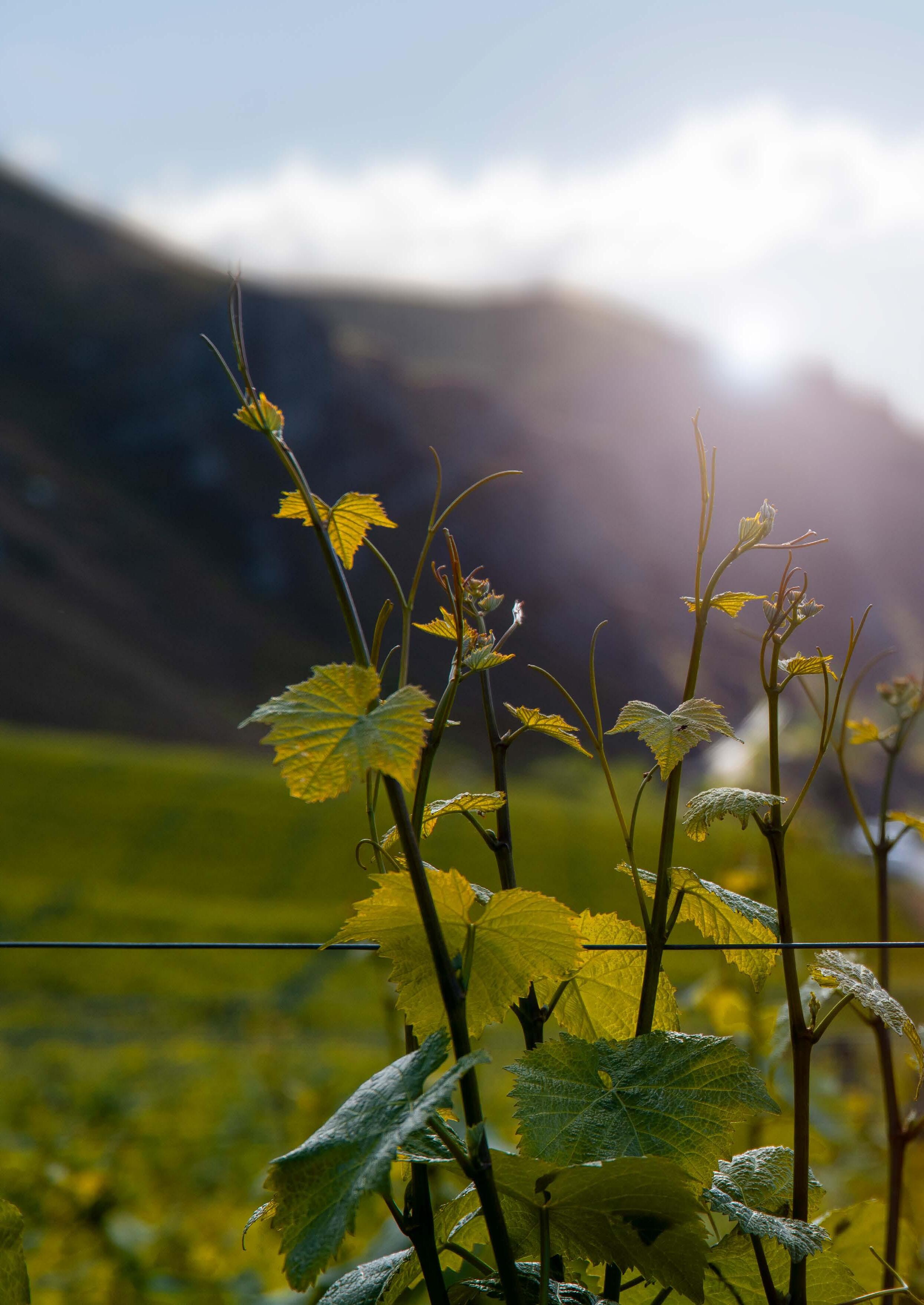
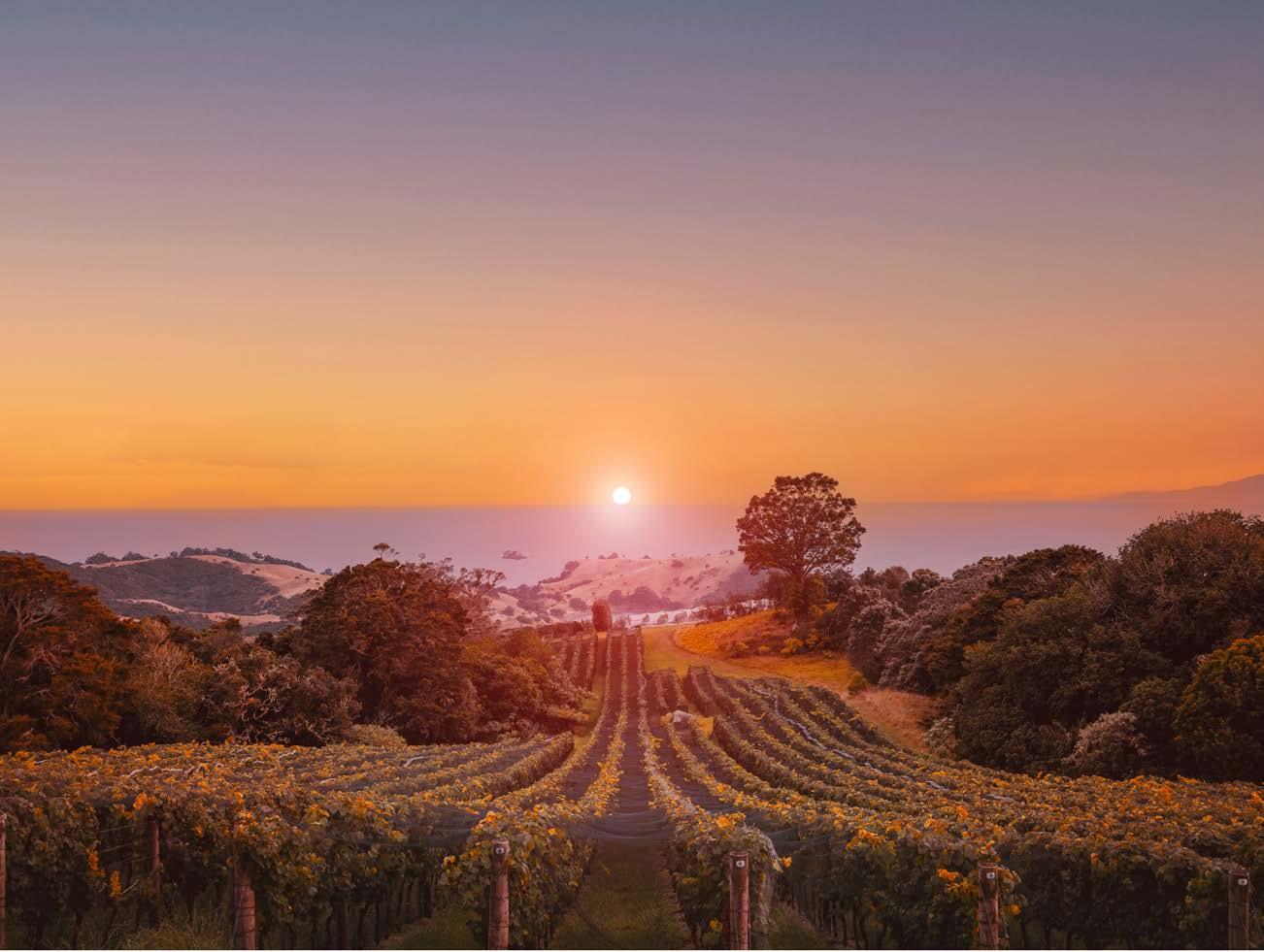
Over the past year consumers across the globe purchased 81 glasses of New Zealand wine per second, each wine proudly labelled with its New Zealand regional origins.
Selling prices for our wines increased, and overall, our average price in 2023/24 was the second highest of all countries competing in our key markets. Our wines, our regions, and our people continued to attract positive endorsements from commentators.
These are all positives, but it is telling that industry concerns over the past 12 months have been dominated by very real short-term challenges. Flat or declining sales, high inventory levels, tough economic conditions, cost increases, falling global demand for wine, and supply chain destocking – these are the issues growers and wineries are worried about here in New Zealand and in wine industries around the world.
These developments all increased uncertainty about the short-term direction of our sector. The concerns were reflected in the results of our 2023 Member Survey.
Addressing these matters has been a key focus of our member communications over the past year. We hosted several member webinars and reported the latest in-market data as a priority. That market data has shown that New Zealand wine has continued to perform solidly in our key markets, despite the challenging environment.
Beyond the short term, the industry is confident about the medium-to-long-term opportunities that exist for our wines. The industry and New Zealand Winegrowers (NZW) have continued to invest in the future. New vineyards have been planted and, as we experience a rapidly changing environment, our focus remains on sustainability and research.
The goal for all continues to be enhancing the reputation of New Zealand Wine and the sustainability of our industry. Achieve this, and the industry will continue to grow significant export value over the next decade and beyond.
After record increases in exports last year, wineries have endured a rollercoaster ride over the past 12 months. From July to January, export volume declined 24% with value down 22%; then from February, exports rebounded and by June had lifted 6% from their January lows. Overall, for the June year end, exports totalled $2.1 billion—the second-highest annual level for the industry, but still down 11% on last year’s record-setting level.
The immediate cause of the early decline in export shipments was reduced replenishment orders from importers, distributors, and retailers, who nevertheless maintained sales by drawing down on their inventories. This meant fewer exports for wineries. Adding to the uncertain environment, tough economic conditions, and in some markets increased taxes, led to reduced demand for wine.
Despite facing tough economic times, consumers have continued to choose to buy New Zealand wine. In our key markets, such
as the USA and UK, sales of New Zealand wine have grown in the past year, despite flat or declining markets for wine overall. This speaks positively to the reputation and standing of our wines with consumers, and the innovation that has been such an important driver for the industry’s international success.
Domestically, the wine market in New Zealand has continued to decline, reflecting a range of factors, from demographic change to increased regulation (for example, additional restrictions placed around the sale of wine due to interpretations about the law, and increased excise tax). Total wine sales, down an estimated 8%, were 78.9 million litres, the lowest level in the past two decades. On a per capita basis, the decline is even steeper with wine consumption down over 20% in less than a decade.
While experiencing a more volatile selling environment, growers and wineries have also been challenged by cost increases, undermining profitability. These cost rises have been across the board, although most galling to producers are those increases imposed by government. Domestically, consecutive excise hikes two years in a row have taken the excise rate to $3.69 per litre, up more than 11%. Excise on wine sold in New Zealand now amounts to over $290 million per year. Further to this, wineries now face a 47% increase in the Alcohol Health Levy (formerly the ALAC levy).
Combined, the cost increases since the spike in inflation commenced in 2021 have undermined sector confidence and profitability. Unsurprisingly, they are taking a toll on industry sentiment. In our 2023 Member Survey, 79% of respondents rated cost increases/inflation as ‘very important’, the highest ranking in the survey.
At home, rising costs are squeezing the ability of New Zealand producers to profitably supply wine into the domestic market. The data indicates that imported wine, much of it low quality and low cost, is taking a rising share of the market. This
trend is of concern to all New Zealand winegrowers.
As the most export-focused of all major global wine producers (nearly 90% of total New Zealand wine sales occur overseas), secure and competitive access to markets is an important foundation for future market growth. Positively, this year's new free trade agreement between New Zealand and the European Union (NZ/EU FTA) has has significantly improved access to the wealthy European market. The new FTA sits alongside other New Zealand trade agreements (including Australia-New Zealand Closer Economic Relations Trade Agreement (ANZCERTA), Comprehensive and Progressive Agreement for Trans-Pacific Partnership (CPTPP) and others) that provide certainty of access into most of our key markets.
The importance of international trade to wine businesses drives our continued engagement with government and international colleagues on trade matters. In fora such as the International Organisation of Vine and Wine (OIV), World Wine Trade Group (WWTG) and International Federation of Wines and Spirits (FIVS), we ensure the New Zealand industry voice is heard. These organisations also give us access to information that forms the basis of the winemaking, labelling, and trade guides and advice that our members rate so highly. When issues arise with technical barriers to trade affecting winegrowers, we work with the Ministry of Primary Industries (MPI) and the Ministry of Foreign Affairs and Trade (MFAT), to support them and try to find a solution.
We work with wineries and partners such as New Zealand Trade and Enterprise (NZTE) to enhance the New Zealand Wine story. Our goal is to build and promote New Zealand Wine as a premium brand.
New Zealand wine has continued to perform solidly in our key markets, despite the challenging environment.
In export markets over the past year, our Education Programme poured 377 wines from 145 different brands to over 3,546 trade, media and engaged consumers. In addition, we hosted stands at major trade fairs where thousands of trade and media met wineries and tasted their wines. Additionally, our public relations (PR) strategy is paying dividends, with targeted New Zealand Wine media content reaching 158 million people. The return on investment for the financial year has exceeded expectations, with $80 generated for every $1 spent on the Global PR Programme.
Domestically, after a three-year hiatus, the return of inbound guests meant we were able to again host international media in our wine regions. We will be proud to host a selected trade and media group for Pinot Noir New Zealand 2025, the first major international wine event held in New Zealand since 2019.
We will continue to offer timely and in-depth market data for members, as we have in the past, in response to more volatile market conditions. Our investment in data analysis capabilities has proved its value, as has our partnership with New Zealand Trade and Enterprise (NZTE), meaning we could deliver insights via webinars and at the Wine Business Forum that would not have otherwise been available to members.
Wine tourists returned to New Zealand in force over the past year. Although overall tourism numbers were still below pre-pandemic levels, many wineries reported a busy summer at their cellar doors.
Our wine tourism activities have focused on two initiatives in the past year. Firstly, we have strongly supported the Winery Cellar Door Tasting Bill as it made its way through the parliamentary process and welcomed it when it finally came into force in August. This law change, introduced by Stuart Smith MP, modernised the legislation covering cellar doors. The changes were strongly supported by wineries, and it has been pleasing to see broad cross-party support for the legislation in Parliament. Now that it has come into effect, we are working to support members to make the most of these changes as the busy summer tourism season approaches.
Secondly, in partnership with Tourism New Zealand and its wholly owned subsidiary Qualmark, we have launched a new wine tourism award to reflect the importance of cellar doors to the industry. The goal of the Qualmark Wine Tourism Award is to celebrate those members who create exceptional experiences for visitors to their cellar doors.
Growers and wineries throughout the country experienced near ideal ripening conditions for vintage 2024. The result is that consumers will see some stellar wines when they come onto the market. Undoubtedly, the wines from 2024 will add to our reputation as a premium quality producer.
However, volume produced from the harvest (395,000 tonnes) was well down on the past two years, reflecting cool spring and early summer weather. Production in some regions was more affected by the spring weather; those producers will be looking for improved crops in 2025.
Future supply will be boosted by the steady rise in vineyard area which reached a new peak of 42,519 hectares this year, up more than 7,000 hectares over the past decade. Our Biosecurity Vineyard Register projects continuing growth in vineyard area at around 500 hectares per year, down slightly on the past decade.
Taking into account the smaller 2024 vintage, we expect that wineries will draw down on any inventory they may have carried over from previous vintages to support both international and domestic sales during the next 12 months, and as such we are not anticipating any supply constraints in the year ahead.
The variability in vintage size over the past four years has been marked with two small harvests (2021 and 2024) bookending our two largest crops in 2022 and 2023. This variability reflects the agricultural risk inherent in the sector, makes business planning difficult, and appears to be increasing as climate change impacts our regions.
As we have noted in previous reports, climate change has the potential to change the distinctive characteristics and flavours of our wines, which have underpinned our marketplace success. We have initiated research through the Bragato Research Institute (BRI), our wholly owned research subsidiary, to develop new planting material to meet the challenges of climate change. Our Grape Days events this year included the first major presentations on this research; it was warmly received by members.
Ensuring BRI research is appropriately targeted is a focus for both NZW and BRI. New governance frameworks have been established in the past year to ensure member needs are front and centre in designing future BRI research programmes. We are confident that BRI, with new programmes coming on stream and a strong member focus, is well-placed to drive the science and knowledge that will underpin future innovation in viticulture and winemaking processes and systems.
Our research on managing the impacts of climate change is complemented by our work to reduce emissions from viticulture and winemaking activities. We have recently released to members a Roadmap to Net Zero 2050 that plots the path forward for our sector to reduce greenhouse gas emissions. We expect it to be widely supported by growers and wineries.
We have also seen innovation in packaging across the sector as one way for wine businesses to reduce their emissions footprint. In May we held a webinar looking at different packaging options. We expect more wineries to look at their packaging emissions in the coming years, and to consider decisions to reduce these.
The Roadmap to Net Zero is but one component of our wider commitment to sustainability. Our most significant initiative this year, alongside our usual activities, has been collaborating with the Ministry for the Environment (MfE) to develop a pilot tool to enable member compliance with upcoming freshwater farm plan regulatory requirements. Once the details
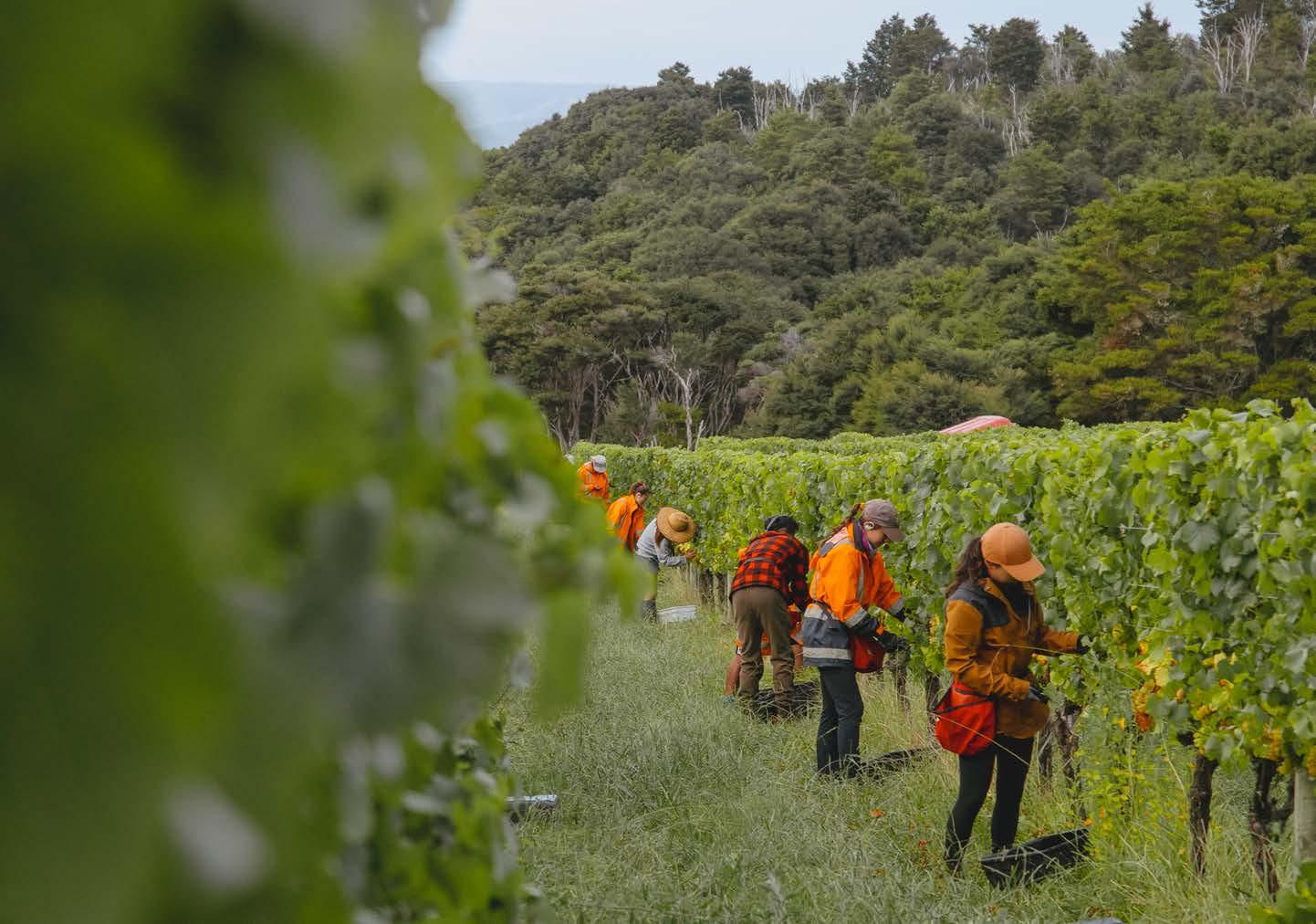
of the new freshwater farm plan regulations are confirmed we can determine better how this tool will assist members on an ongoing basis. As an industry we will need to invest in developing the pilot tool and integrating freshwater farm plan requirements into SWNZ as much as possible.
In 2025 we will celebrate an important milestone in our sustainability journey, 30 years of Sustainable Winegrowing New Zealand (SWNZ). SWNZ was established in 1995 as a voluntary, industry-led, independently audited programme committed to improving the sustainability of viticultural and winemaking operations. SWNZ currently certifies 96% of the vineyard area in New Zealand and is recognised as a leader in the field.
A key reason for the strong support of SWNZ is that, over the past 30 years, the programme has continually evolved and grown to meet the changing needs of members, and the world in which they do business. The issues it addresses are now much broader and more complex than three decades ago. Next season will see another step forward—all member vineyards will be required to have a biosecurity plan in place. These plans will help vineyard managers protect their vineyards should a new pest or disease enter the country.
As an industry, we are proud that individual growers and wineries have demonstrated their ongoing commitment to sustainability through their membership of SWNZ. This is complemented by the active role that organics
As an industry, we are proud that individual growers and wineries have demonstrated their on-going commitment to sustainability through their membership of SWNZ.
and biodynamics play in our sector. As such, we are confident vineyards and wineries will continue to be well placed to demonstrate their commitment to a sustainable future; a commitment that is important to our customers worldwide.
Our sector proudly employs more than 7,000 New Zealanders who grow the grapes, and make, market, and sell our wines. Over the next 12 months, we will once again take the pulse of our workforce with the Our People Survey, which will provide a snapshot of where we are at and highlight any matters we need to address.
The goal of NZW's People activities is to attract, develop, and retain skilled and talented staff within the sector. Programmes such as Women in Wine, Young Winemaker of the Year, Young Viticulturist of the Year and our mentoring programmes are all strongly supported by members. Next year marks the 20th year of our Young Viticulturist of the Year programme.
Looking to the future, we contributed funds towards a report on ‘A Skills-based Wine Workforce’, which examined future industry staffing and skills needs.
Supporting our permanent workforce are numerous seasonal roles, particularly during vintage and winter pruning. Access to overseas workers has improved markedly since the end of COVID-19 border restrictions. Nevertheless, we have been active in various workstreams around the Recognised Seasonal Employer (RSE) scheme, Accredited Employer Work Visa (AEWV) programme, and other labour-related matters to ensure appropriate settings for our seasonal workforce.
Finally, we are pleased to add Nick Hoskins, Xan Harding and Michael Brajkovich MW to the Roll of Fellows of New Zealand Winegrowers. Their service to different aspects of our sector —respectively viticulture, industry organisations, and winemaking—across many years has helped build the New Zealand wine success story that we are so proud of today.
NZW is the unified industry organisation that represents and promotes the interests of all the wineries and growers in New Zealand. Our focus is on creating enduring value for our members.
Our 2023 Member Survey indicated broad support from levy payers for our activities. However, we cannot and must not rest on our laurels if we are to meet the ever-changing needs of our membership.
Our governance, levies, and representation review has made significant progress over the past 12 months. We are now at the point where we need to engage with our members to discuss the options and recommendations. It will be up to our broad base of members to decide the matters addressed in the review.
Member decisions must ensure NZW is fit for purpose to undertake its role in our sector. While there are many matters that will always be for individual businesses to decide, NZW, as the collective voice for growers and wineries, has an important role to play in enhancing the reputation of New Zealand Wine and the sustainability of the industry.
For our wine regions, and Aotearoa New Zealand as a whole, that will mean more highvalue exports, more high-paying roles, more high-value tourists, and a more sustainable industry in future years.

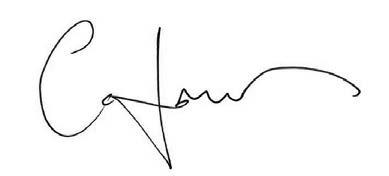
Clive Jones (Chair)

Fabian Yukich (Deputy Chair)
Over the last few years, there were many headlines about increasing alcohol consumption, particularly around COVID-19 and the lockdowns.
Stats NZ publishes an annual figure of “alcohol available for consumption” domestically. In the year ended December 2023, the total figure fell 4.3% (wine saw a 2.4% reduction, beer and spirits fell by more than that). This trend is not a one off—in the past 10 years, per capita consumption of alcohol (for those aged 15 years and above) has fallen 10% according to Stats NZ.
This decline reflects a number of different factors, including demographic changes, migration, and changing market dynamics.
It’s important to distinguish between total consumption and harmful consumption. Thankfully, declining harmful consumption is also occuring. The most recent data from a Health New Zealand survey showed that 84% of New Zealanders are already drinking responsibly (up 3% from the previous year). That reduction equates to 110,000 fewer New Zealanders drinking in a harmful way compared to the previous year. We welcome this change, and remain committed to preventing harmful consumption in our communities.
This decline reflects a number of different factors, including demographic changes, migration, and changing market dynamics.
As part of this commitment to social responsibility, NZW provides funding to The Tomorrow Project (TTP), an incorporated society and registered charity. TTP funds the Life Education Trust to deliver SMASHED, a programme that uses live theatre and interactive workshops to engage students on the dangers of underage drinking. The programme was developed overseas, and has been positively reviewed in New Zealand by the New Zealand Council of Educational Research. TTP, again with NZW support, is also working on a new brand to replace the longstanding Cheers! brand—watch this space.
NZW’s Advocacy team also offers information and guidance to our members on the requirements of the Sale and Supply of Alcohol Act, the Alcohol Advertising and Promotion Code, and other requirements related to responsible advertising and promotion of alcohol.
Government regulations and initiatives also have the power to impact harmful consumption. While we welcome any reduction in harmful consumption, interventions need to be done in an evidence-based way and should be specifically targeted towards harmful consumption (not to the many New Zealanders who already drink responsibly).
The increase to the health levy is driven by the Government’s intention to increase health-led alcohol-related activities to address alcohol harm in the coming year. We are requesting greater transparency in spending of this health levy, through increased engagement by government with industry on the setting of priorities and measurement of effectiveness of programmes and activities funded from the levy.

Identifying
what’s required for New Zealand’s winegrowers to produce, market, and sell competitively and then providing the support, tools, and advocacy to make that change a reality. NZW Advocacy activities focus on member guidance, wine standards, government engagement, intellectual property protection, growing our people, promoting social responsibility, and encouraging free and fair trade.
trade
In May this year, the NZ/EU FTA came into force As well as removing all tariffs on New Zealand wine exports to the European Union (EU) market, it includes a Wine Annex with additional flexibility on labelling and winemaking practices. However, we are mindful that other parts of the FTA Agreement will impose costs on some winegrowers (e.g. those who will have to change labels in accordance with new geographical indication requirements). Many of New Zealand’s registered geographical indications will also be formally protected in the EU for the first time.
We continue to monitor global labelling and winemaking developments and are mindful of their potential to add cost and complexity for winegrowers. This year we devoted significant resources to supporting our members with the implementation
We continue to monitor global labelling and winemaking developments and are mindful of their potential to add cost and complexity for winegrowers.
of EU nutrition and ingredient labelling requirements. Given the growth of the low and no-alcohol wine category, some countries are also considering how to accommodate these products within their regulations.
The domestic regulatory framework
Alcohol licensing: We welcomed recent changes to the Sale and Supply of Alcohol Act that allow winery cellar doors to charge for tasting samples of their wines without the need to obtain an on-licence. The Act also resolves a technical issue that has prevented wineries in some regions from having a winery cellar door and a restaurant in the same licensed footprint. This change supports responsible consumption while also—for the first time—allowing wineries to appropriately value their premium product when providing it to tourists at the cellar door.
Government-imposed cost increases: We were disappointed that the government announced yet another substantial excise increase for the coming year (making it 6.9% in 2022, 6.65% in 2023, and 4.1% in 2024). This means that excise on a typical 750ml bottle of wine has increased from $2.33 to $2.77 in just three years, and this is on top of increasing production costs across the board.
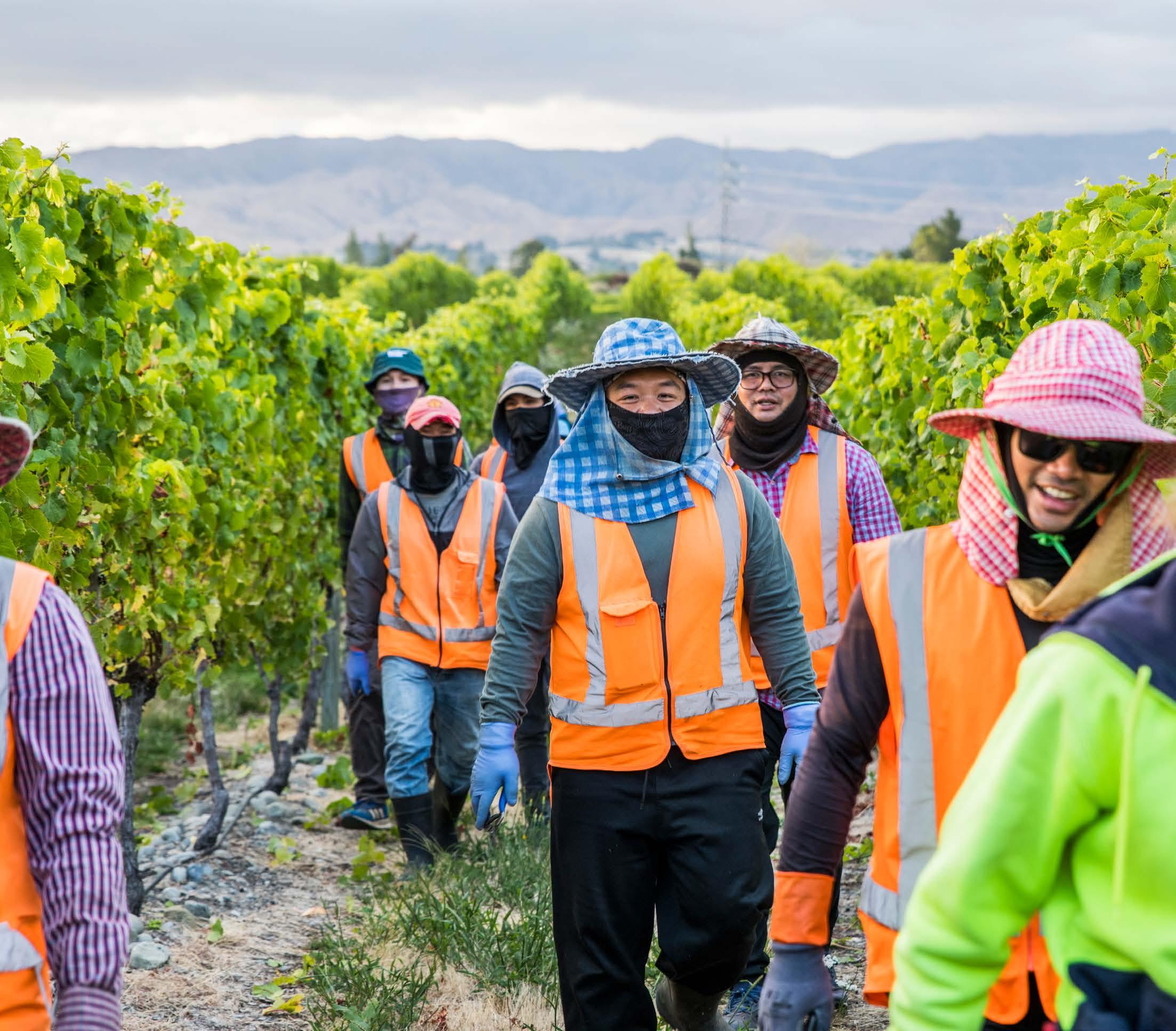
The government announced a $5.2 million increase to the levy collected from the alcohol beverage industry to reduce alcohol harm. We will be asking the government for increased transparency and engagement in spending priorities to reduce the harmful consumption of alcohol in New Zealand.
Simulated recall: As part of MPI’s Regulatory Redesign Project, many businesses across the food and beverage sector are now required to undertake an annual simulated recall to test their processes. This year, our team partnered with MPI to deliver a simulated recall exercise for winegrowers. We have received positive feedback from many wineries on this initiative and expect to run it again in the coming year (with a different test scenario).
We welcome the government’s intention to increase the RSE scheme’s numbers over time.
Each year, NZW makes or contributes to many direct submissions to government or written policy proposals on a wide variety of matters. While these submissions were primarily within New Zealand, we also made submissions on some international issues.
For more information, please contact advocacy@nzwine.com

The law change for winery cellar doors has modernised the legislation. It allows wineries to value their premium product, and offer wine tourism experiences that international and local visitors expect.
We launched the Vine to Wine book in May as a resource to enable secondary-school teachers to include winegrowing industry-related content in their curriculums.
We interviewed each wine region to determine their workforce priorities, with responses confirming the positive role of NZW workforce activity to support and complement regionally led approaches to workforce issues and initiatives, with future emphasis needed on attraction and retention of skilled staff.
These findings, together with the outcomes from the Workforce Skills Survey, will be used to inform a review of our Sustainable Workforce Action Plan in the coming year.
We welcome the government’s increase of the RSE scheme’s numbers and removal of additional costs on employers imposed by the previous government, along with the government's creation of the SPWV for seasonal workers. These changes will support the industry's ability to access international workers for vintage 2025.
The Young Viticulturist and Tonnellerie de Mercurey Young Winemaker of the Year competitions support our future leaders and bring together a special community of members and industry suppliers. In 2023 the Young Viticulturist of the Year was Tai Nelson from Soljan’s Estate, and the Young Winemaker of the Year was Alena Kamper from Sacred Hill.
The Women in Wine and NZW Mentoring programmes which run every year, continue to increase confidence and enthusiasm in our members. In November 2023, a Women in Wine event was held at Kate Sheppard House, Christchurch, with a focus on ‘Connect. Inform.
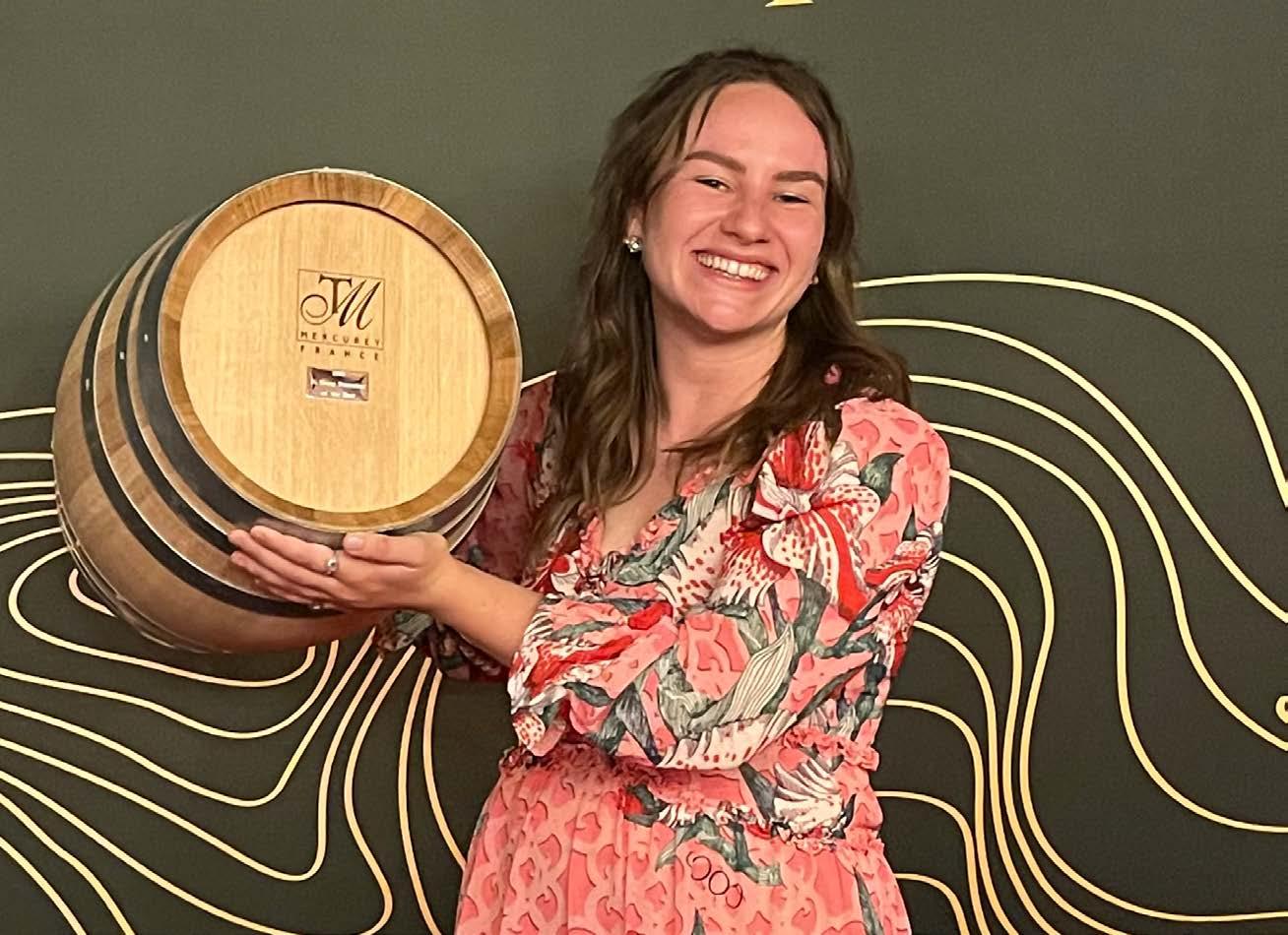

Change’. Dr Jo Cribb was appointed as the new Chair of Women in Wine in February 2024. We acknowledged Kate Radburnd’s work in her four years as Chair.
To encourage mental fitness in our industry (with support from WorkSafe), we were pleased to offer Go You! webinars and provide members with updated resources.

Bragato Research Institute (BRI) drives New Zealand’s grape and wine research, innovation, and knowledge transfer so the industry can make better business decisions and ensure New Zealand remains renowned for its exceptional wine.
After six years of operating, BRI is entering a new phase of maturity where our focus is on delivering greater value to the New Zealand wine industry—both providing support and advice today, while setting the industry up for longterm success tomorrow. We are also increasing our collaborations and connectiveness to support the wider research community to deliver value to the wine industry.
Delivering for the wine industry
New Zealand wine industry members are BRI’s most important stakeholders. Our purpose is to guide and conduct research that addresses the industry’s challenges and opportunities.
Following our 2023 NZW Member Survey results, we have been concentrating on responding to the feedback we received: members are focused on short-term challenges and want research and education to address this; members want relevant and summarised research; and members want more engagement across the country, including workshops, regional support, and advice.
Our research provides winegrowers with knowledge and tools to protect and enhance the quality and distinctiveness of New Zealand wine, the sustainability of our winegrowing, and the productivity and profitability of their businesses.
BRI has three focus areas: Vineyard Innovation, Genetics for Winegrowing, and Winemaking Innovation, with Sustainable Winegrowing and Supporting Change themes running across all three.
Vineyard innovation
This year, we know members have faced increasing cost pressures in the vineyard, and we have projects underway to help address these challenges.
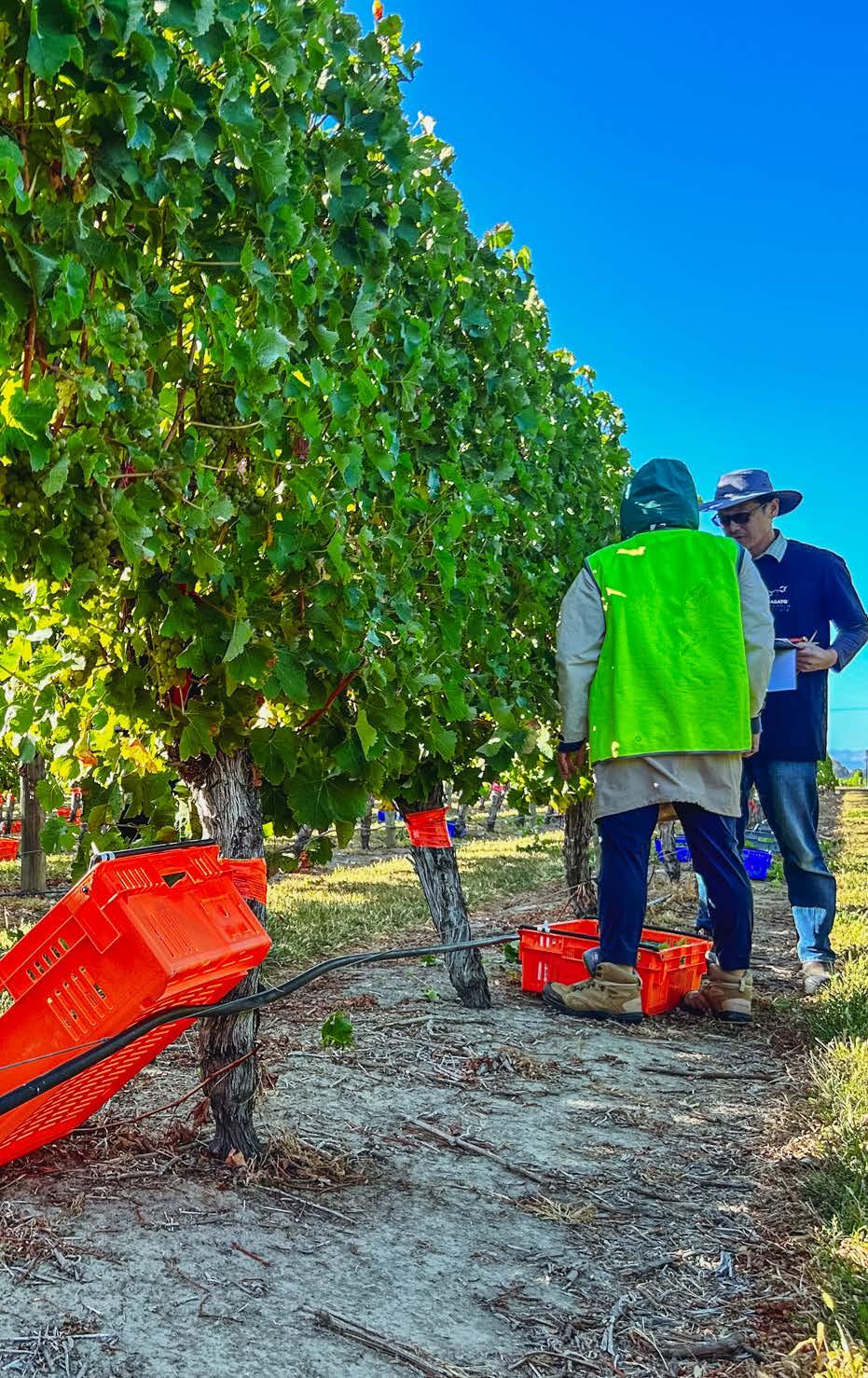
Grapevine trunk diseases (GTD) threaten the economic sustainability of our wine industry. GTDs shorten the lifespan of vineyards and cause significant yield and quality reductions. With no curative treatments available, remedial surgery is one of the few options for managing GTD. Because the established root system is retained, it is usually more cost-effective than replanting. A five-year project concluded this year that established best practice guidelines for managing GTD through remedial surgery, including the optimal time and season to conduct remedial surgery. It evaluated vine health and productivity of Sauvignon Blanc, Cabernet Sauvignon and Merlot for five growing seasons, providing valuable knowledge to winegrowers.
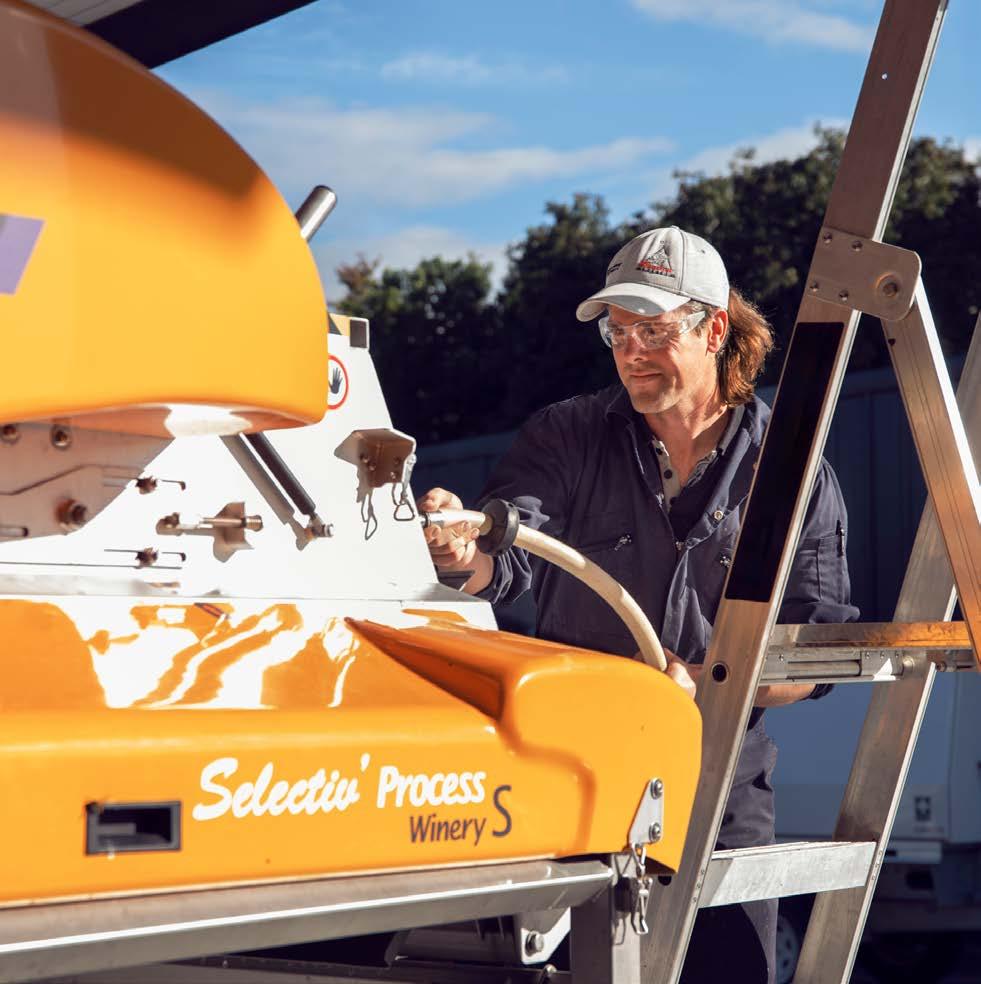
Our research provides winegrowers with knowledge and tools to protect and enhance the quality and distinctiveness of New Zealand wine, the sustainability of our winegrowing, and the productivity and profitability of their businesses.
Long spur pruning has shown promise as an alternative to cane pruning for Sauvignon Blanc in Marlborough. This year, BRI concluded a three-year trial to gather objective data on the effectiveness of long spur pruning. The results show long spur pruning produces similar yield and quality, and has greater potential for full automation than cane pruning, reducing winter labour requirements.
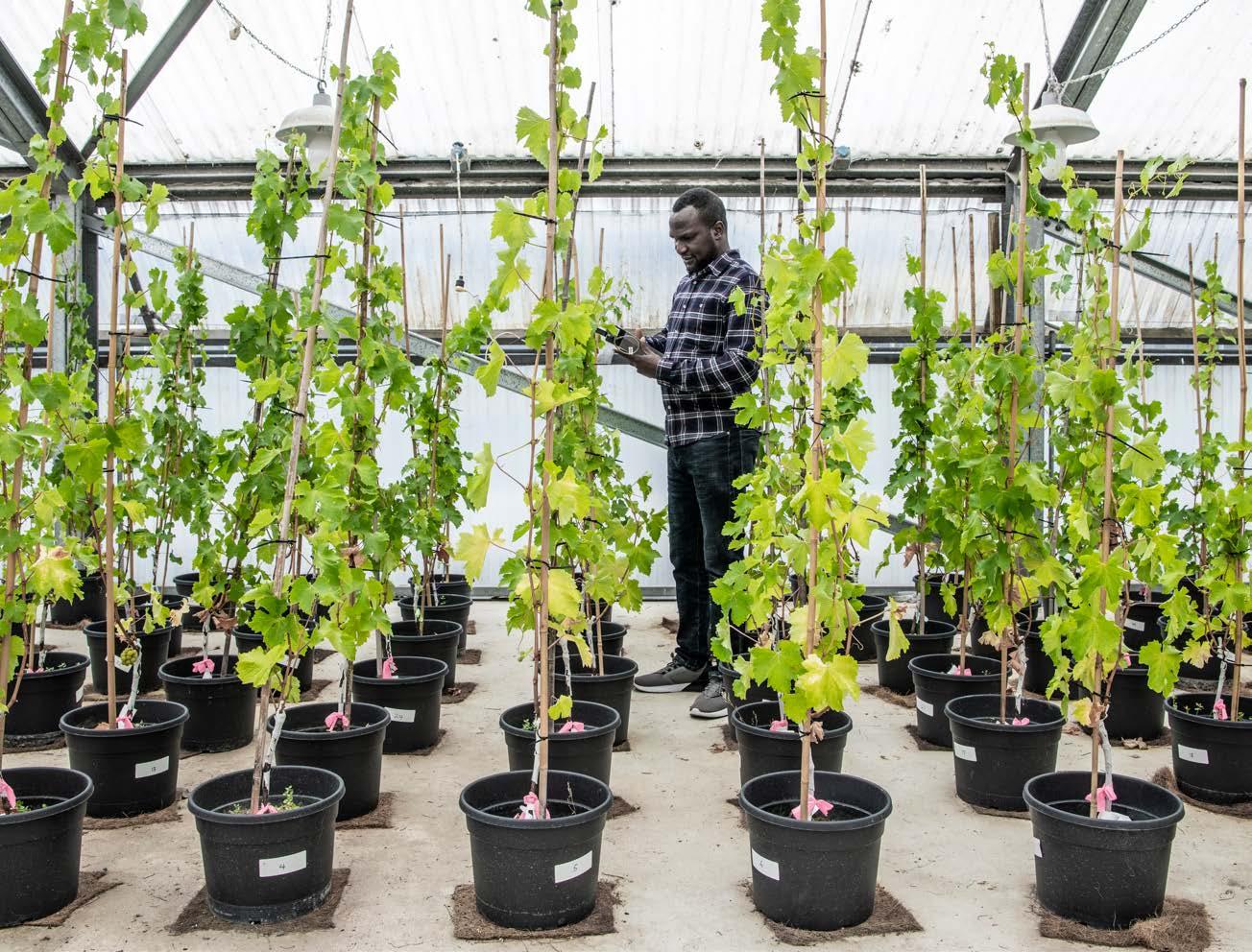
The Sauvignon Blanc Grapevine Improvement Programme aims to improve the resilience of our industry by creating over 10,000 entirely new Sauvignon Blanc variants.
Multiple audits of the wine sector have identified our reliance on Sauvignon Blanc and a lack of genetic diversity as one of the biggest risks facing our industry. The Sauvignon Blanc Grapevine Improvement Programme aims to improve the resilience of our industry by creating over 10,000 entirely new Sauvignon Blanc variants and identifying plants that exhibit useful traits such as increased yield, resistance to disease, and frost tolerance.
In October 2023, the programme achieved a major milestone with the completion of a reference genome. This valuable genomic resource allows the team to describe differences between ‘Mass Select’ and plantlets already produced in the large diversity panel that will be generated in the programme.
Another milestone in the programme was collaborating with the Grape Genetics Research Unit of the the United States Department of Agriculture (USDA) in New York, which has been leading the development of advanced
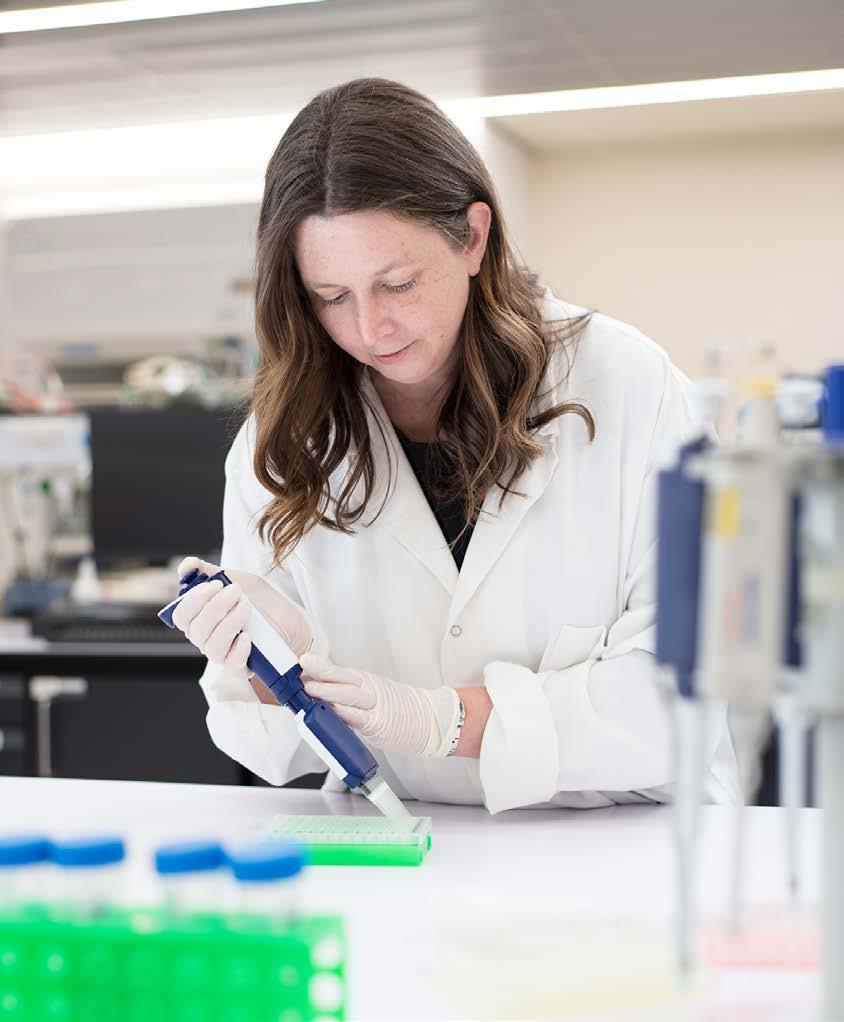
phenotyping technologies. The pilot-scale study demonstrated that a large population of plants could be efficiently screened to assess phenotypic resistance or susceptibility to both downy and powdery mildew. This technology will be used to screen all new variants generated in the programme in the coming years.
During vintage 2024, the BRI Research Winery processed 7.5 tonnes of grapes over 252 individual ferments, with full capacity being 210. The team were able to schedule and process tanks to allow for these extra bookings. The trials allowed industry clients and BRI research projects to test different winemaking techniques, ingredients, or the impact of vineyard practices under tightly controlled conditions. As with all our commercial services, BRI invests any profits back into industry research.
There is growing concern among winemakers about reductive odours in Pinot Noir wine, impacting the perceived quality of the wine and contributing to substantial problems. BRI is collaborating with the University of Auckland to explain why these odours develop and what winemakers can do to prevent it happening.
During vintage 2024, the BRI Research Winery processed 7.5 tonnes of grapes over 252 individual ferments, with full capacity being 210.
Research only has value if it is communicated and understood by the industry. This year, we have renewed our focus on this area and have delivered a range of research-focused events including Grape Days in Marlborough, Hawke's Bay and Central Otago, the Research & Innovation Forum in Wellington, and several educational regional workshops. These events have presented an opportunity to connect with the wine industry across the country and deliver valuable learning experiences.
research
In late 2023, BRI established the Research Governance Committee (RGC) as a BRI Board subcommittee. This group of industry experts is focused on ensuring BRI delivers strong value from science—responding to members’ evolving views on research needs and effectively transferring new knowledge to winegrowers.
In April 2024, BRI invited researchers to submit expressions of interest (EOIs) to undertake new research projects with wide benefits for the New Zealand wine industry. This year, we sought proposals that will support the industry to address cost pressures and that deliver research in actionable formats. We received 53 EOIs that were reviewed in detail by the RGC, and these have been narrowed down to six new projects.
BRI welcomed Dr Juliet Ansell as CEO in mid-July and thanked Dr Bruce Campbell for steering the organisation during his five-month interim CEO role. This year BRI established a Senior Leadership team, incorporating skills from each area of the business to lead the future direction and build on the culture of BRI —setting up the organisation, and therefore the industry, for long-term success.

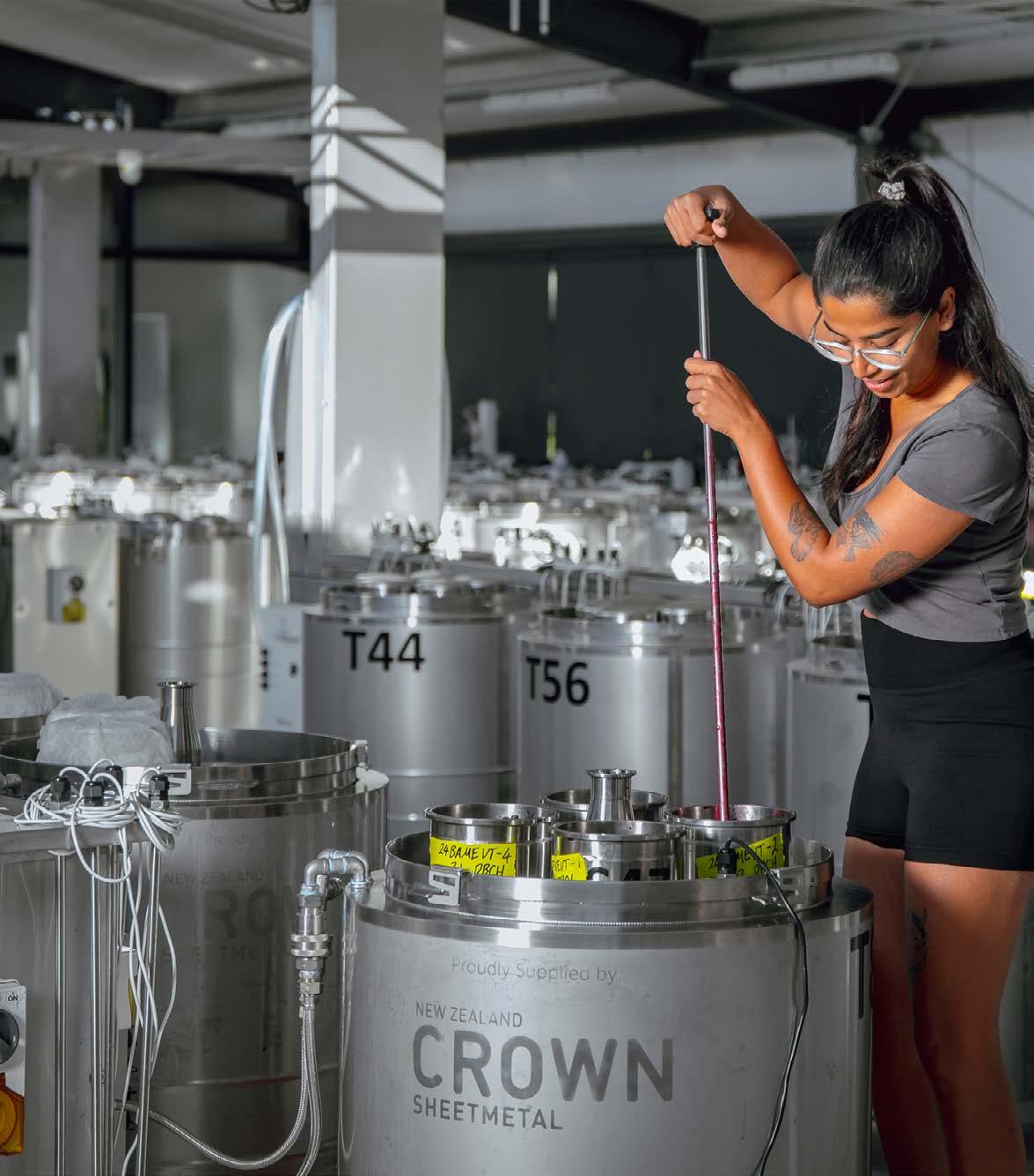
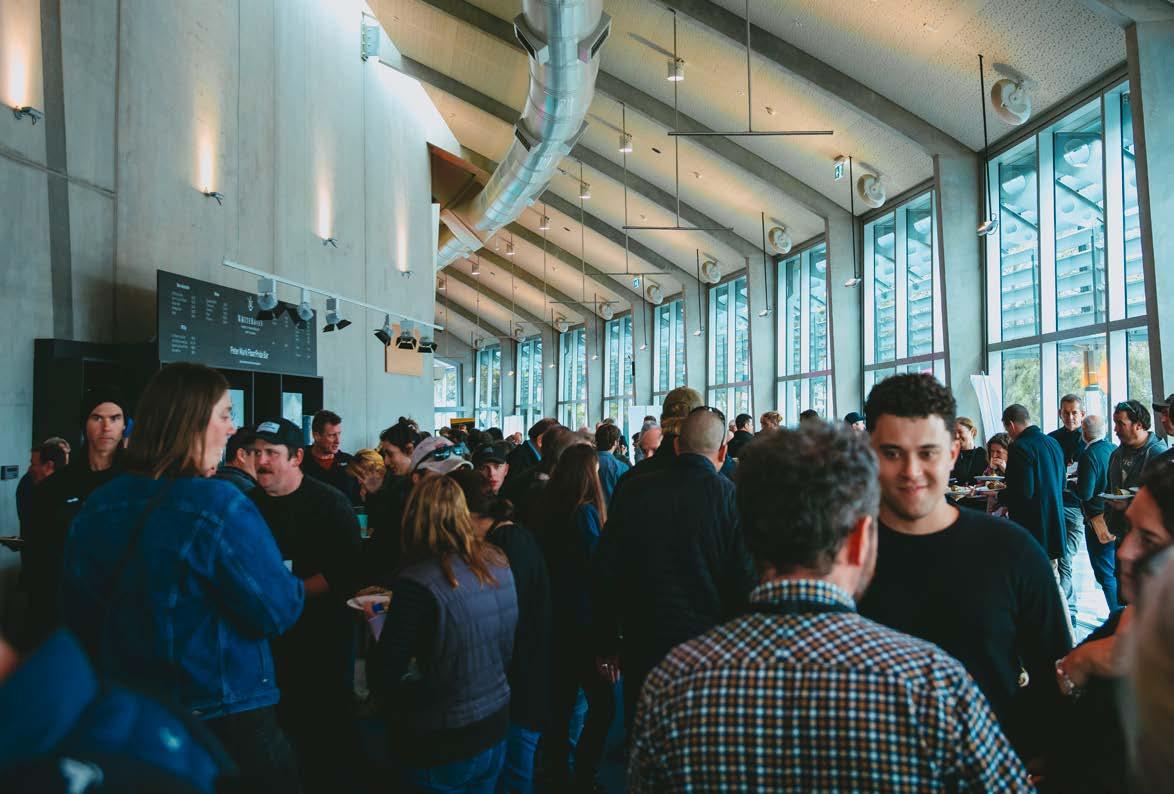
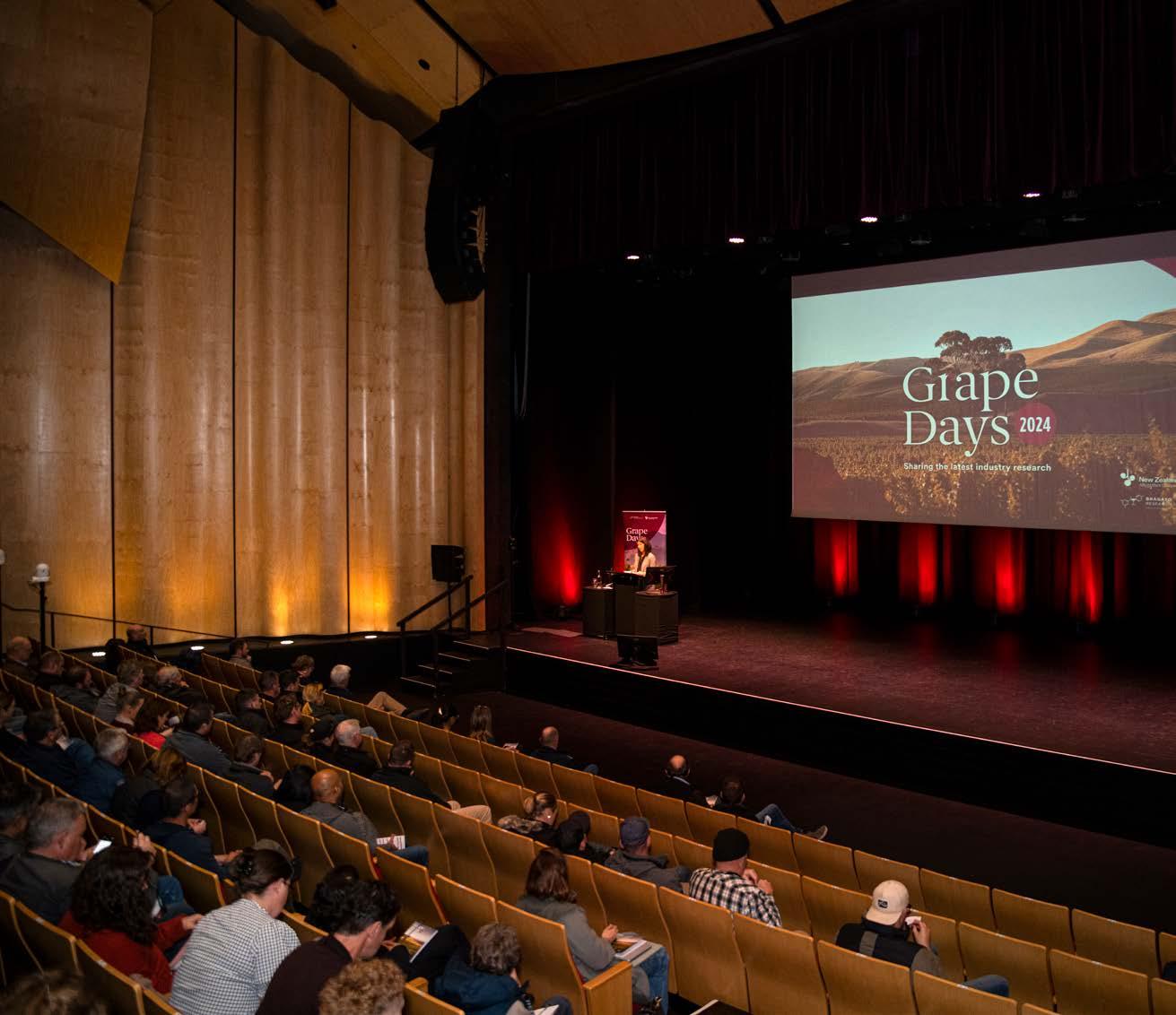
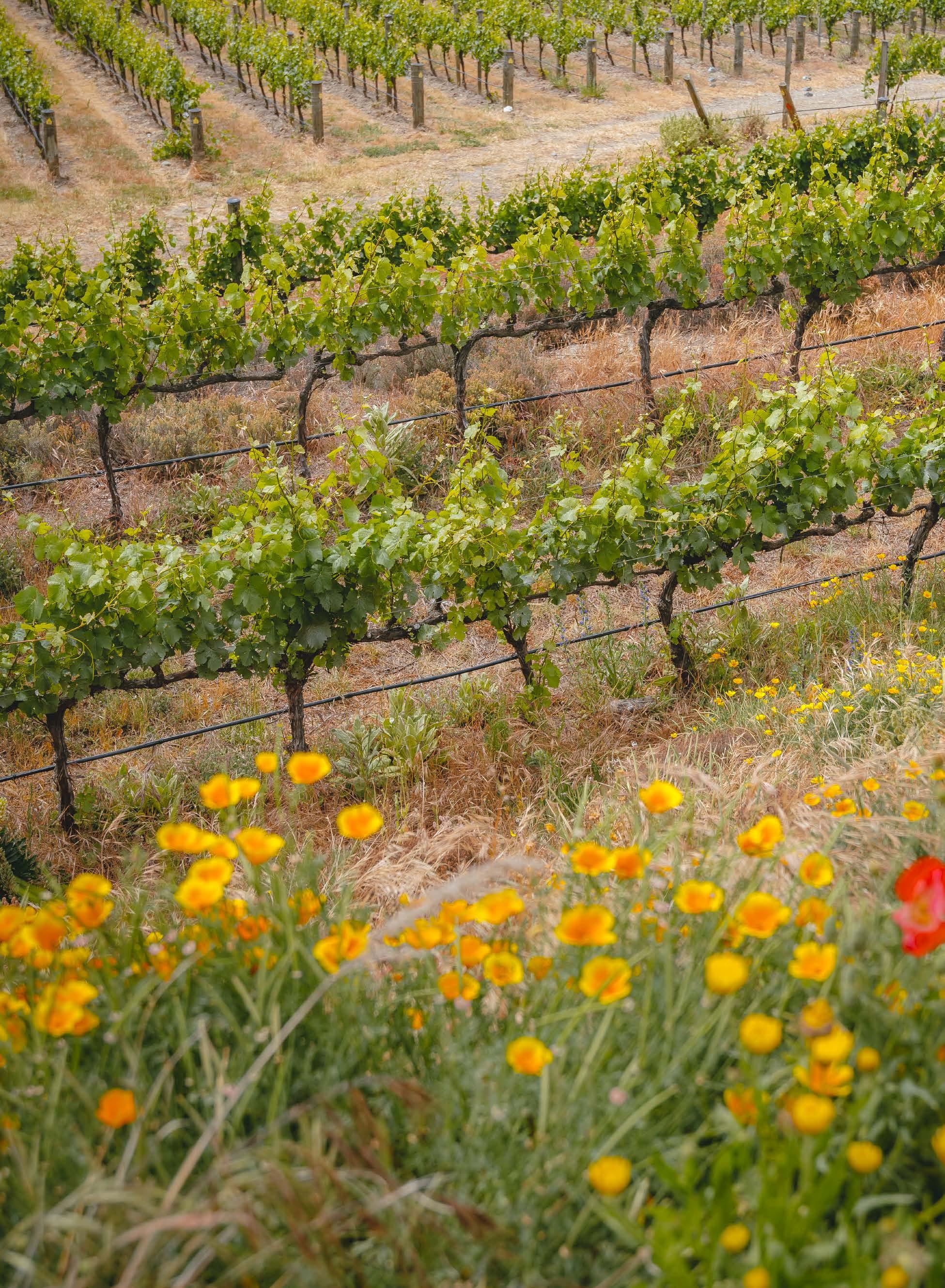
2025 is a major milestone for SWNZ as it will mark the 30th anniversary of the programme.

The New Zealand wine industry’s focus on sustainability demonstrates our commitment to the future across six key areas: water, waste, plant protection, soil, people, and climate change.
The NZW Environment Strategy identifies a specific goal for each area. Through its ongoing delivery of Sustainable Winegrowing New Zealand (SWNZ) and the Biosecurity Programme, the NZW Environment team helps to drive the industry towards these goals.
Throughout the past year, the Environment team has led industry engagement with the government on the development of freshwater farm planning regulations that will enable many members to meet their regulatory requirements through industry programmes like SWNZ. This work, which will help to reduce the cost of regulation on members, will continue to be a key focus for the group over the next 12 months. As part of this work, NZW secured $1.4 million from the Essential Freshwater Fund administered by MfE to launch Project Raumatatiki: Freshwater Farm Planning for Viticulture. This project will be a key priority next year. The project will develop an online farm planning tool, educate members on what’s required, and assist them to complete farm plans as required.
NZW partnered with the Energy Efficiency Conservation Authority (EECA) and thinkstep-anz to develop the Roadmap to Net Zero 2050. This work identifies achievable milestones that will guide our industry towards our goal and provide insights for winemakers and viticulturists on how to reduce emissions in the winery and on the vineyard. The Roadmap will help to enhance and refine SWNZ requirements in the climate change area. The Roadmap to Net Zero 2050 was launched at the Research & Innovation Forum in August this year.
Over the past 12 months, through a funding partnership with MPI, the Supercharging SWNZ project enabled further enhancements to the annual SWNZ national reports on plant protection, water use, and greenhouse TE KANO, CENTRAL OTAGO. PHOTO: RICHARD BRIGGS
Our industry's goal for climate change is to be net zero by 2050. Overall, a net zero goal is an ambitious target that demonstrates the industry’s commitment to a sustainable future. As both consumers' and market gatekeepers’ understanding of climate change has matured over time, it is increasingly important to show the next steps the wine industry will take to mitigate the impact of climate change.
Throughout 2024, NZW has concentrated on strengthening and streamlining the SWNZ programme to ensure stakeholders in government, markets, and the New Zealand community have confidence in the robustness of our certification, while ensuring the programme remains relevant and cost-effective for members.
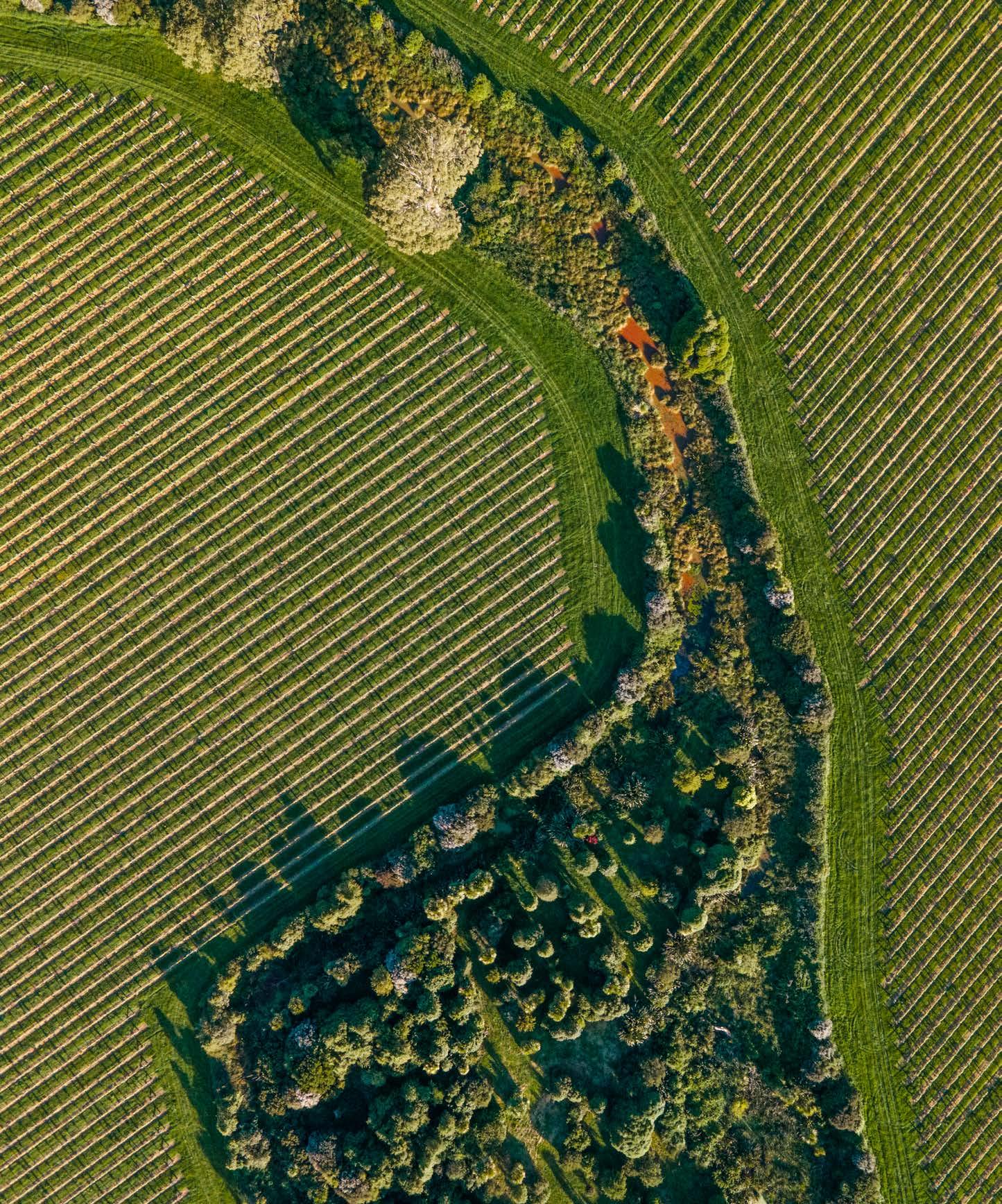
“As growers, we have the luxury of SWNZ standards allowing us one auditing process, irrespective of the number of wine companies we’re growing for; a service envied by many in the horticulture and agriculture sectors.”
Richard Hunter of Southern Valleys Viticulture (Pyramid Valley Vineyard, Marlborough)
gas emissions, as well as enhancements to the newly created regional reports. These SWNZ reports will continue to be refined and enhanced over the next year with continued support from MPI.
2025 is a major milestone for SWNZ as it will mark the 30th anniversary of the programme. SWNZ has come a long way over that time, and it will continue to evolve in response to changing market expectations and member needs. Over the coming year, NZW will celebrate the efforts of a wide range of members who have used SWNZ to demonstrate their commitment to a sustainable future.
Throughout the past 12 months, NZW Biosecurity activity has concentrated on improving our readiness in two key areas:
• To improve our ability to respond to Xylella fastidiosa, the causal agent of Pierce’s disease in grapevines, one of our most important biosecurity risks
• Create a pan-sector biosecurity traceability programme designed to improve our ability to track and trace the movement of highrisk goods during an incursion.
Through the Government Industry Agreement for Biosecurity Readiness and Response, NZW can pursue these priorities with leveraged investment from MPI and other industry partners. This work is expected to be finalised by mid-2025. Readiness work also continues via a range of other agreements for brown marmorated stink bug (BMSB), the NZW Grafted Grapevine Standard, and the Plant Pass nursery biosecurity scheme. The NZW Biosecurity and Emergency Response Manager continues to chair both the BMSB Council and the Xylella Action Group.
In August 2023, the NZW Board agreed that vineyard biosecurity plans will become mandatory for all SWNZ vineyard members, from the 2026 audit season. Biosecurity risk is ever-present, and it is much easier to implement a biosecurity plan before a new threat arrives than while trying to deal with the impacts of new pests and diseases. The Biosecurity team will visit all winegrowing regions over the course of 2025 to ensure members can access support with developing their biosecurity plans and understand what will be required.
NZW reviewed its response to Cyclone Gabrielle in late 2023. While the response was deemed timely and well-received by members, the review highlighted the need to streamline how we work alongside regional organisations during big events. This will be prioritised over the next 12 months.
Organic wine production continues to attract strong interest within the New Zealand wine industry. Data sourced from BioGro NZ in September 2023 found that the number of certified organic New Zealand wineries had increased by 13% from September 2021, to 116 wineries. Many wineries have more than one organic label, with 16% of New Zealand wineries having at least one organic label.
Organic Winegrowers New Zealand (OWNZ), the industry association for growers practicing or interested in organic production, continues to work with the support and collaboration of NZW to promote and support organic grape and wine production in New Zealand.
This year, growers across the wine regions learned about organic practices at a variety of
OWNZ events, from keynote seminars to local community field days. In June, OWNZ brought trailblazing regenerative organic winegrower Kelly Mulville from Paicines Ranch in California on a teaching tour of New Zealand, delivering the Horticentre Charitable Trust OWNZ Regenerative Viticulture Tour.
Organic Wine Week celebrations proved popular again this year. Activities such as organic wine list takeovers, winemaker dinners, retail promotions, and in-store tastings popped up across the motu.
Perhaps the most exciting Organic Wine Week event this year was the inaugural Down to Earth tasting in Auckland, introducing consumers and trade to the largest gathering of New Zealand organic wine producers to ever join forces at a public event. Following its success, Down to Earth is set to expand to a larger venue in Auckland and launch in Wellington next year.

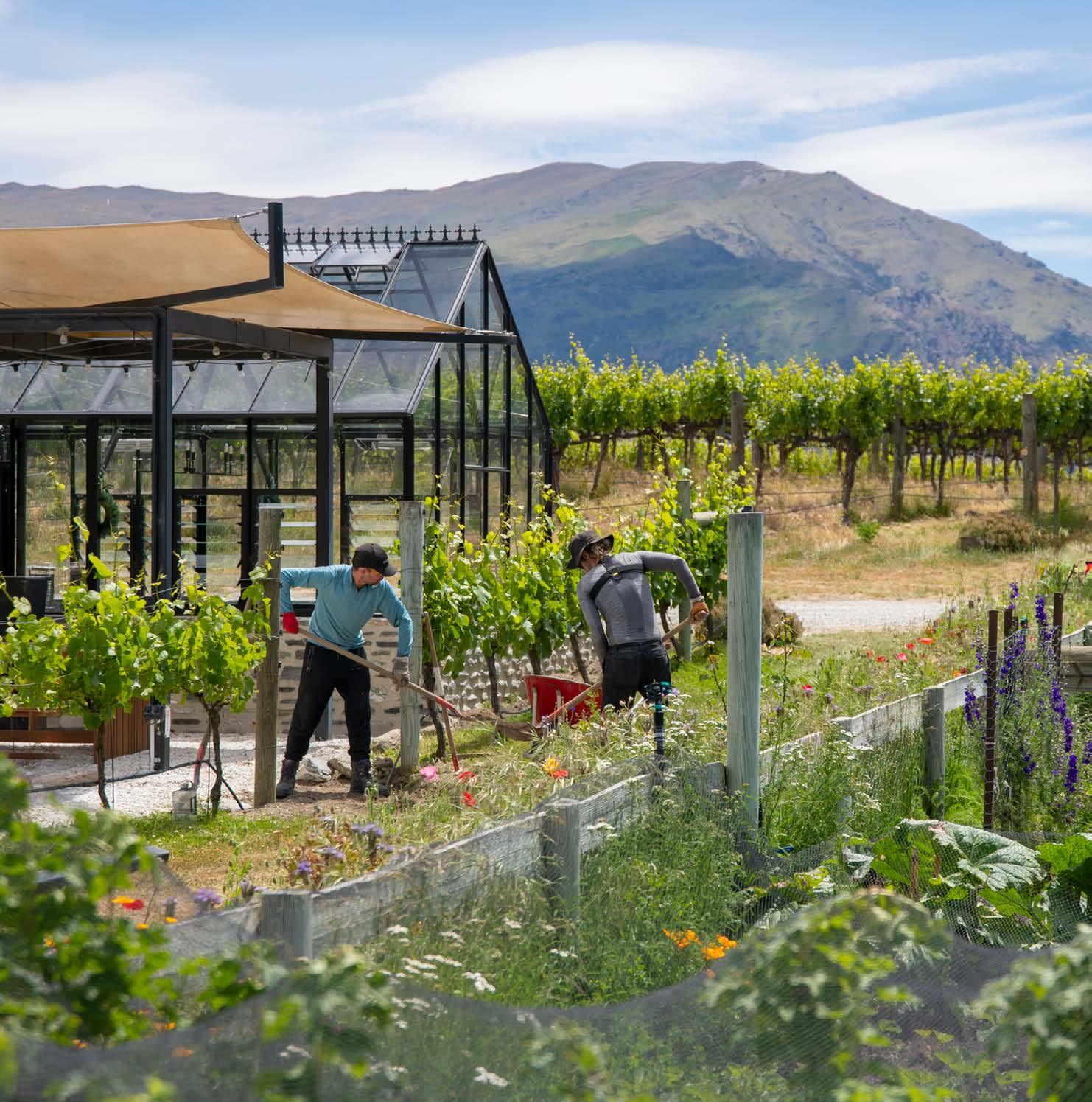
June 2024 Submission to MfE on changes to Freshwater Farm Planning Regulations
March 2024 Submission to MPI on Proposed Measures to Manage Phytoplasmas on Ornamental Plants for Planting
June 2024 Submission to MPI—Feedback on Potential Phytosanitary Measures for the Management of Xylella fastidiosa on Plants for Planting Hosts

Building on the momentum from last year, the NZW Brand team has continued to actively share the New Zealand Wine story through our A ltogether Unique positioning. With increased access to key markets, we have supported members to forge connections with key influencers, as well as worked to deliver valuable market insights as we continue to drive awareness and preference for New Zealand wine.
New Zealand Wine, Altogether Unique
Eighteen months post-launch, the NZW Brand team continues to bring to life the refreshed New Zealand Wine brand story—New Zealand Wine, Altogether Unique—designed to support the ongoing premiumisation of New Zealand wine and define what sets us apart on the world stage. The brand pillars Purity, Innovation, and Care shine through all the activity we do as we showcase our Altogether Unique brand platform across our key export markets.
In November, The Blind Tasting was held in Hawke’s Bay with the tasting spanning 987 wines across 37 varieties and styles, from all 10 of our wine-producing regions. This initiative is designed to identify exemplary wines from across our membership for NZW levy-funded educational activities, which are a mainstay of taking our Altogether Unique story to the world.
In February, the New Zealand Wine Annual Trade Tastings took place in London and Dublin. These are the largest and most diverse tastings of New Zealand wine in the region. They attracted over 500 guests across both events. ProWein, the world’s largest wine and spirit fair, was another major opportunity for New Zealand to shine, with close to 45,000 visitors having the chance to see 6,000 exhibitors from 60 countries.
The China Altogether Unique New Zealand Wine roadshow ran in Beijing and Shanghai in May, with more than 1,200 trade professionals attending the events. Masterclasses were
co-hosted by Fongyee Walker MW and Sophie Parker-Thomson MW in each city using a lineup of wines that represented regional and varietal diversity and told a compelling story for New Zealand Wine.
For the third year running, NZW promoted Pour Yourself a Glass of New Zealand, a month-long campaign that celebrates New Zealand’s white wine varieties and coincides with International Sauvignon Blanc, Pinot Gris and Chardonnay Days, all of which fall in May. This campaign also continued the quest to secure the White Wine Emoji as a creative way to turn heads to New Zealand white wine. The campaign was once again a success, and over the three years it has reached 115 million people and generated an equivalent advertising value of $3.3 million. Engagement from members has increased substantially year on year, with a 60% increase in toolkit downloads in 2024 compared to 2023.
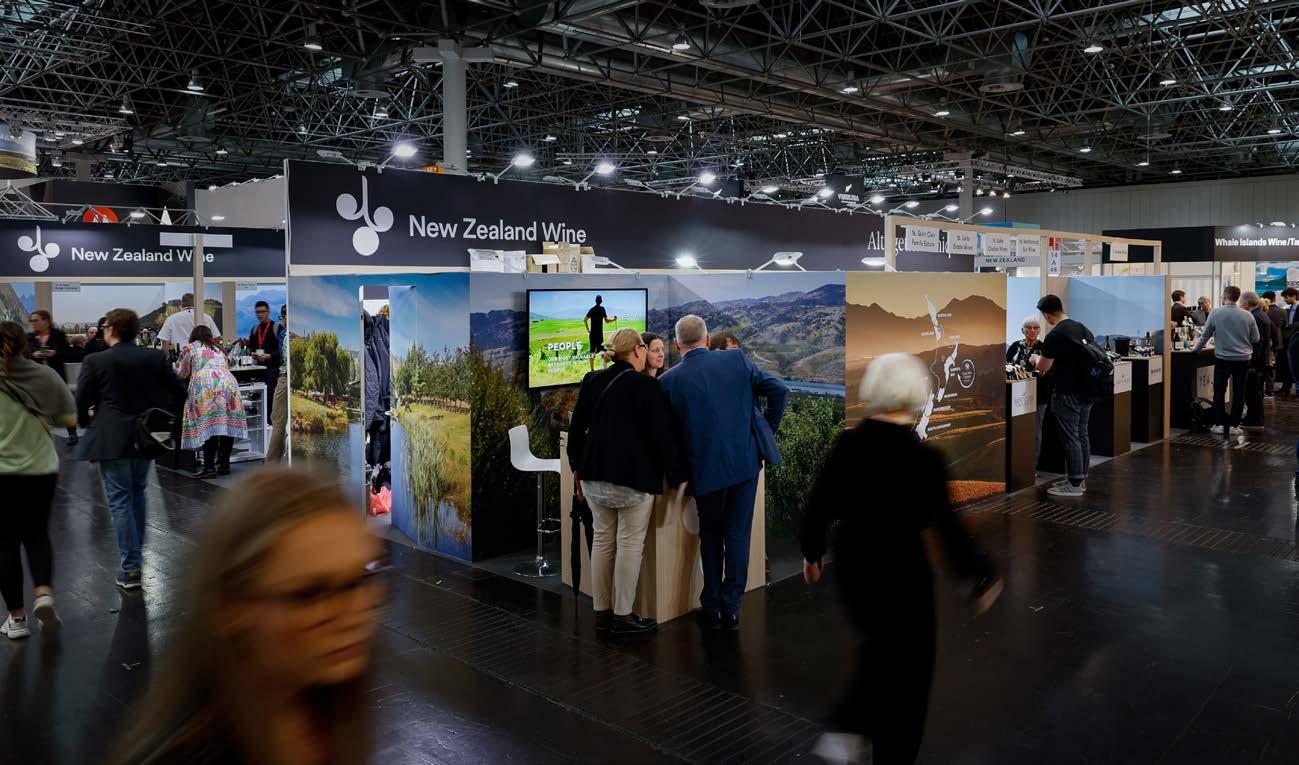
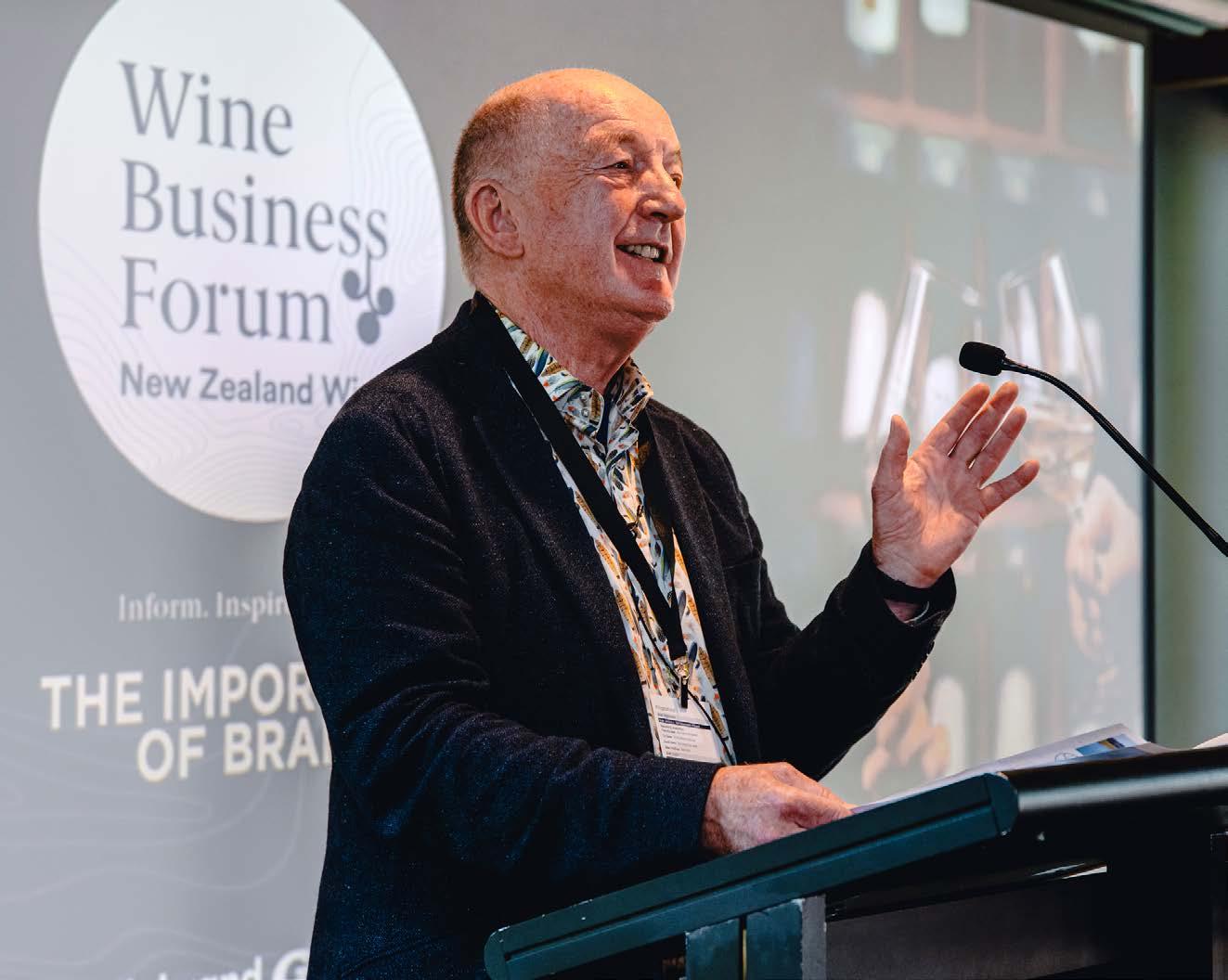
“You guys broke open an entirely new world with Marlborough Sauvignon Blanc. You created something that had no connection with any wine that had ever been made. You put the wine drinker at the front rather than at the back. You made wine a ‘drink’ that people gulped down because of the pleasure that it gave. Wine never did that before.”
Oz Clarke, Winegrower Magazine
Leveraging partnerships to widen the reach of the New Zealand Wine brand remains a key priority. This year, NZW has worked closely with Tourism New Zealand (TNZ) and Qualmark to strengthen our industry’s offering of wine tourism experiences. At the Altogether Unique 2024 Celebration Dinner in August, Qualmark presented the inaugural New Zealand Wine Tourism Award as a part of the accolades shared that evening. This award acknowledges the important role that wine tourism plays in New Zealand’s visitor economy and will recognise excellence in the visitor experience to our cellar doors.
Partnering with NZTE continues in key and high-growth export markets to drive awareness and preference for New Zealand wine. In Canada, many initiatives have been collaborated on such as Liquor Board retail promotions, loyalty programme promotions, and Liquor Board buyer tastings to bring new wineries and products into the market. In Australia, Catherine Wansink, NZTE’s Commercial Business Advisor, continues to be seconded to NZW part-time to support NZW’s Australia wine market objectives, an arrangement that mutually supports the objectives of both organisations. For high-growth emerging markets that fall out of the scope of NZW’s focused key market strategy (such as South Korea and Japan), NZTE has played an active role in their activities to drive forward the wine sector with strong participation from New Zealand wineries exploring those markets.
Another collaboration that is showing great mutual benefit is NZW’s UK Europe team collaborating with counterparts from Wine Australia to more cost-effectively reach target audiences. Trade events took place in Denmark and Sweden in October 2023 and in the UK in June 2024. This has been extremely well received by all sectors and more collaborative events are planned for 2024-2025.
Delivering relevant intel and insights to members remains a key focus of the Brand team’s work. Highlights include the New Zealand Wine Brand Health Tracker and market pulse webinars, with attendance levels over the past year reaching record levels.
Another initiative showing strong member participation was the inaugural Wine Business Forum held in November 2023. The theme focused on the importance of brand and allowed NZW to share in more depth what underpins the Altogether Unique brand platform. The inspiring speaker line up of both international and locally-based speakers included brand experts,
BR A ND A CTIVITY
The Numbers
Global PR Programme
Driving frequency of mention for New Zealand Wine
The NZW Global PR Programme ensures that New Zealand Wine continues to be a vibrant part of the global media conversation.
MEDIA IMPRESSIONS
103
Intel & Insights
REACH 158 MILLION
Helping members make sustainable decisions for their businesses.
EQUIVALENT ADVERTISING VALUE
$12.4 MILLION
6,236
UNIQUE VIEWS ACROSS NZW INTEL & INSIGHTS DATA
industry practitioners, leading wine industry commentators, and trade. A particular highlight was UK wine expert Oz Clarke attending the event. As a long-time champion for New Zealand wine, particularly Marlborough Sauvignon Blanc, it was perfect timing to mark Marlborough’s 50th anniversary as a wine region.
Looking forward, after an eight-year hiatus, Pinot Noir New Zealand 2025 is returning in February. This three-day event plays a significant role in NZW’s strategy to help keep the premium New Zealand Wine brand top of mind in our major markets. NZW will host trade and media at the event with the scope to deliver focused outputs to our target audiences and continue our efforts to build and strengthen the reputation for New Zealand Wine.

Looking forward, after an eight-year hiatus, Pinot Noir New Zealand 2025 is returning in February.
International Education Programme
‘Influencing the influencer’
The NZW International Education Programme is a category development initiative designed to influence decision makers across on-premise, off-premise, importer and distributor, by educating them about the unique and profitable offering that New Zealand Wine presents.
36
EDUCATIONAL INITIATIVES
377
INDIVIDUAL WINES POURED IN EDUCATIONAL ACTIVITIES
3,546
TRADE AND MEDIA REACHED THROUGH THE EDUCATION PROGRAMME
987 WINES ENTERED INTO THE BLIND TASTING
17,721
UNIQUE VIEWS ACROSS THE NZW TRADE HUB
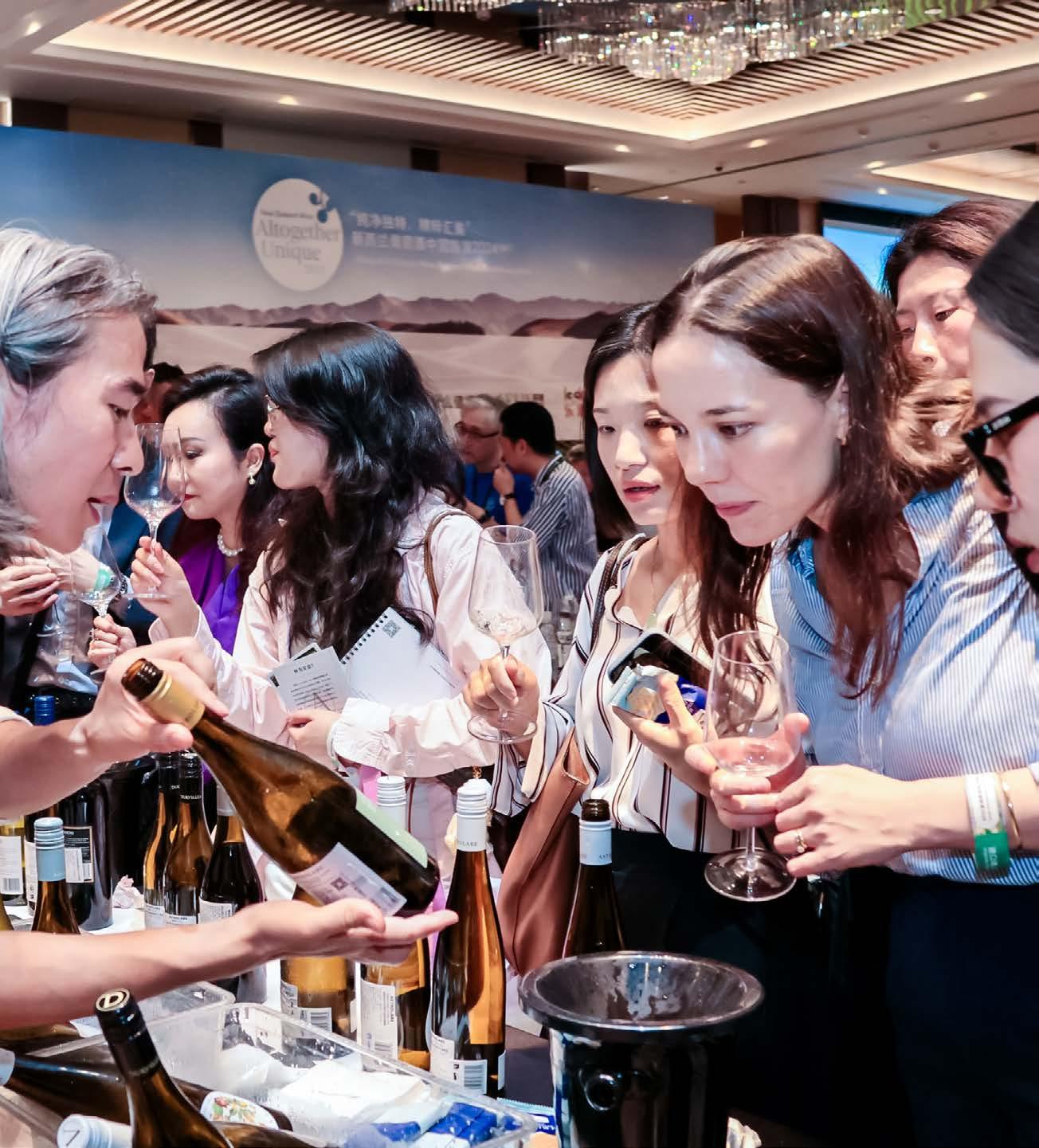
New Zealand Winegrowers Inc (NZW) is the national organisation of and for the members of the New Zealand grape and wine industry.
Around the world, New Zealand is renowned for our exceptional wines.
Creating enduring member value by enhancing the reputation of New Zealand Wine and the sustainability of our industry.
To better understand the needs of the New Zealand grape and wine industry, NZW undertakes a biennial survey of its members. The survey was conducted October 2023 (February 2022).
How responsive is NZW to your queries or requests?
For the year ended 30 June 2024
87% 14% 74% 8%
To support members to convey a consistent, strong image of New Zealand Wine. Somewhat or very responsive
Overall satisfaction with NZW performance in the previous 12 months
A trusted voice advocating for a supportive operating environment.
Somewhat or very satisfied
SUBMISSIONS TO GOVERNMENT* Submissions to government on policies impacting the industry. (2023 - 16)
19 9
MEMBER WEBINARS HELD*
Topics included Labelling and Winemaking Practices and updates to Wine Standards Management Plans. (2023 - 7)
Supporting industry to attract, develop, and retain skills and talent.
NUMBER OF PARTICIPANTS

40 ENTRANTS (2023 - 39)

20 ENTRANTS (2023 - 24)
NZW Mentoring Programme
11
MENTEES 11 MENTORS (2023 - 12 mentees, 12 mentors)

9
MENTEES 9 MENTORS (2023 - 11 mentees, 11 mentors)
7 TOOLKITS* were available to members
ONLINE BRANDING TOOLKITS
Building and promoting a premium New Zealand Wine brand. (2023 - 9 toolkits, 4,753 downloads)
5,427 DOWNLOADS*
INTEL & INSIGHTS Interactive delivery of market information.
3,237
Unique number of individuals who viewed pages in our Intel & Insights section* (2023 - 3,515)

Demonstrating our commitment to a sustainable future.
1,801
VINEYARDS ARE SWNZ-CERTIFIED*
292
WINERIES ARE SWNZ-CERTIFIED* (2023 - 1,783) (2023 - 307)
Sustainable Winegrowing New Zealand (SWNZ) is an industry-wide programme run by NZW, with regular audits conducted by an independent agency.
Government Industry Agreements (GIAs) enable signatories to share the decision-making, responsibilities, and costs of preparing for and responding to biosecurity incursions. (2023 - 4)
NZW IS A SIGNATORY TO
4
GIA AGREEMENTS*
Driving science and knowledge for innovation in viticulture and winemaking.
We invest across three core themes—Vineyard Innovation, Grapevine Improvement and Genomics, and Winery Innovation, supported by our cross-cutting focus on Sustainable Winegrowing and Supporting Change.
FUNDING APPLIED TO RESEARCH PROJECTS, BY RESEARCH THEME
Vineyard Innovation
GV and Genomics
Winery Innovation
Sustainability
Supporting Change
Communication
Collating and sharing knowledge to support decision-making.
“SWNZ gives our wine buying partners, both home and overseas, the peace of mind that as an industry we are setting our standards with uniformity and consistency across all growers. As a viticulturist I value the depth of information and resources provided to us by SWNZ and the fact that this information evolves year on year underlines their commitment to move with the ever-changing demands of the market. ”
Richard Hunter of Southern Valleys Viticulture (Viticulturist for Pyramid Farm in Marlborough)
27 TRIALS 8%
OUR RESEARCH WINERY DE-RISKS INNOVATION
Our custom-designed winery lets winegrowers trial new vineyard and winemaking ideas at small scale under tightly controlled experimental conditions.
(2023 - 3) 11 11 5 3
RESEARCH
#Not included in total.

An education extension event to promote best practice in viticulture and agrichemical usage. Held in all nine key wine regions.
661 ( 2023 - 663)

A practical, thought-provoking programme to share the latest industry-driven and funded research with an emphasis on helping winegrowers apply the findings. Held in three key wine regions.
796 ( 2023 - 916)
Judgements - New Zealand Winegrowers service performance metrics are consistent with, and linked to, the entity's purpose and strategies. The service performance information reported above is consistent with information used by the Board, committees, and management for internal decision-making. New Zealand Winegrowers has discretion over the measurement, aggregation, and presentation of service performance only to the extent the measures relate to the entity's strategy and purpose.
Basis for preparation - Unless otherwise stated the service performance data is for the full year from 1 July 2023 to 30 June 2024 (with comparatives presented for the full year ended 30 June 2023).
*These statistics have been audited by KPMG.
New Zealand Winegrowers Inc (NZW) is the industry organisation of and for the winemakers and grape growers of New Zealand.
These are the accounts for NZW and its subsidiaries, NZW Research Centre Limited trading as BRI, and GVI Limited Partnership (GVI LP).
Operating income includes the grape and wine levies. These are used to fund Brand, Research, Environment, Advocacy, and People activities.
User-pays activities include events in New Zealand and overseas, SWNZ, and Young Viticulturist and Young Winemaker competitions.
BRI provides world-leading science, research, and innovation to benefit New Zealand’s entire grape and wine industry.
GVI LP is managing a research programme to develop and select new and improved variants of our existing Sauvignon Blanc clones.
The financial information presented has been extracted from the audited financial statements of NZW for the year ended 30 June 2024.
N/A – Not yet available
*Estimate **Earlier years' vineyard numbers can be found on the website: https://www.nzwine.com/en/media/statistics/vineyard-reports/ ***NZW Members are winemakers and grape growers who sell their products and pay a grape or wine levy on these sales. Payment of the grape or wine levies entitles you to membership of NZW. Total number of members reported from 2024.
PRODUCING
36,463
*Reported seperately since 2023.
**The Hawke's Bay vineyard area was overstated in 2020 due to a data collection error.
Source: New Zealand Winegrowers Vineyard Register Reports
*The data shown are the results from the New Zealand Winegrowers Annual Vintage Surveys, whereas 'Industry Total' represents the tonnes crushed by the total wine industry. The difference between 'Survey Total' and 'Industry Total' is data from wine companies who did not respond to the survey. **Waikato/Bay of Plenty reported under Other.
Source: New Zealand Winegrowers Annual Vintage Surveys
All litre and NZ$ figures are in millions.
Source: Stats New Zealand
This data is subject to confirmation by Stats NZ
* Data will slightly differ in total volume to those obtained through Stats New Zealand.
Note: All figures are in millions of litres.
Source: Wine Export Certification Service
New Zealand Winegrowers
Clive Jones (Chair)
Nautilus Estate
Fabian Yukich (Deputy Chair)
Babich Wines
Jo Cribb
Governance Consultant
Michael Henley MW
Aotearoa New Zealand
Fine Wine Estates
Kevin Mapson
Pernod Ricard
New Zealand
Duncan McFarlane
Indevin Group Ltd
Tim Nowell-Usticke
Mount Riley
Tim Rose
Rose Family Vineyards
Emma Taylor
Te Awanga Estate
Simon Towns
Constellation Brands
Melissa Tripe
Hawkswood Vineyard Ltd
Misha Wilkinson
Misha's Vineyard
For a list of the Roll of Fellows for New Zealand Winegrowers and Wine Institute of New Zealand, and the Roll of Honorary Life Members, please visit nzwine.com/our-people
REGIONAL WINEGROWING ASSOCIATIONS
Hawke's Bay Winegrowers Inc
Sally Duncan (Chair) sally@hawkesbaywine.co.nz
Brent Linn (Executive Officer) brent@hawkesbaywine.co.nz
Peter Hurlstone (Regional Representative) peter.hurlstone@pernod-ricard.com hawkesbaywine.co.nz
Marlborough Winegrowers Association Inc & Wine Marlborough Ltd
Marcus Pickens (General Manager) marcus@winemarlborough.nz
Beth Forrest (Chair) beth@forrest.co.nz
Sarah Linklater (Marketing & Communications Manager) sarah@winemarlborough.nz marlboroughwinenz.com
Nelson Winegrowers Association Inc & Wine Nelson
Paul Miles (Chair) paul.miles@riwakariverestate.com tastenelsonwines.nz
Wairarapa Winegrowers Association
Wilco Lam (Chair) wilco@ogs.nz
Jeremy Corban (Deputy Chair/ Secretary and Treasurer) jeremy.corban@bigskyconsulting.co.nz
Rebekah Glover (Marketing) marketing@wairarapawine.co.nz wairarapawine.co.nz
North Canterbury Winegrowers
Matt Barbour (Chair) mattbabour77@hotmail.com
Peter Bosworth (Treasurer) pbos@xtra.co.nz
Jack Hill (Deputy Chair) jack@theboneline.co.nz
Britteny Duval (Administration) admin@ncwineregion.co.nz northcanterburywines.co.nz
Central Otago Winegrowers Association
Anna Pullar (Chair) chair@cowa.org.nz
Carolyn Murray (General Manager) carolyn@cowa.org.nz
Madeleine Bambridge (Membership & Communications) maddie@cowa.org.nz centralotagowine.co
Gisborne Winegrowers Society Inc
Mark Thompson (Chair) mark@gisvin.co.nz
Kaye Riddell (Administration) hello@gisbornewine.co.nz gisbornewine.co.nz
Northern Winegrowers & Grapevine Improvement Association Inc
Peter Jones (Chair) peter.jones@thelandingnz.com
SUB-REGION WINEGROWING ASSOCIATIONS
Waiheke Winegrowers Association
Rory Dunleavy (Chair) rory@temotu.co.nz
Paul Harrop (Treasurer) paul@harrops.co.nz waihekewine.co.nz
Matakana Winegrowers Inc
Hegman Foster (President) matakanawinegrowers@gmail.com matakanawine.co.nz
Northland Winegrowers Association
Glenda Neil (Secretary) admin@northlandwinegrowers.co.nz northlandwinegrowers.co.nz
West Auckland Winegrowers
Michael Brajkovich MW michael@kumeuriver.co.nz
Waitaki Valley Winegrowers Association
Dave Sutton (Chair) dave@tekanoestate.com waitakiwine.com




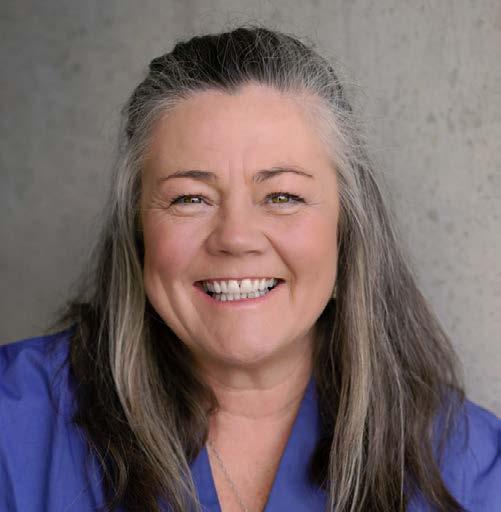


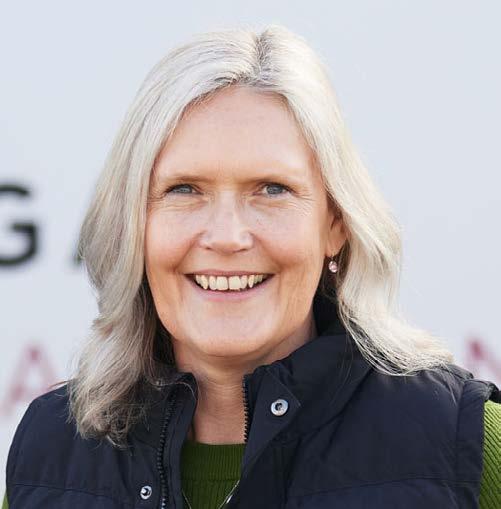

Some places have unblemished sunlight, young soil, or beautiful water. Others have innovation, passion for the craft, or care for the land.
But only one place has the purity of it all...